Perennial plants are a gardener's best friend. You only have to plant them once and they will survive for years, assuming you're taking good care of them. You don't have to have specific soil to make them happy, and you can put them in different locations all around your yard. They're a great way to get season-long color into your yard with minimal effort. They also come in all sorts of shapes and sizes from the little ground cover types to those that grow several feet tall. You will have a lot of choices, in fact, I've put together a list of 55 perennial flowers that will take your summer garden to new heights.
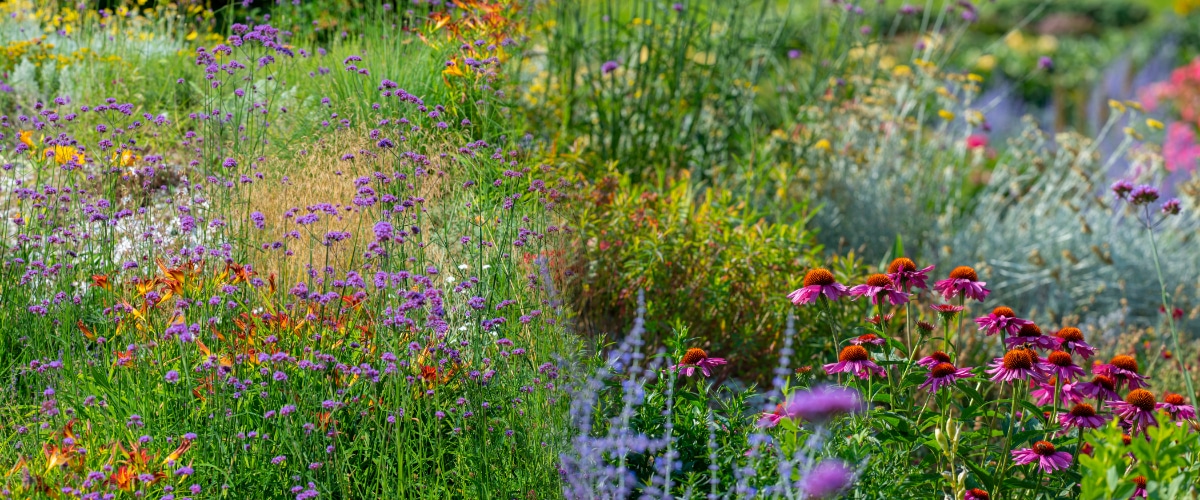
Before you head out to the garden center for your perennial flowers it’s important for you to have a little bit of information about your garden and your expectations for it. Knowing the things listed below will help you have a perennial garden that you are proud of.
Jump to:
Light Requirements
Not all perennials need the same light requirements. Equally, not every space is good for all perennials. Though many flowers tend to be forgiving you will want to consider the spaces you’re planning to put these plants in and how much sun they get throughout the day. A plant that prefers full sun is going to struggle in a heavily shaded spot and a plant that prefers shade will also struggle in full sun. Know if you have a shady garden or a sunny garden. It's important to know how many hours of sun the spot you want to fill gets, so know how much space you have and what the lighting is like in those areas.
Soil Requirements
Plants can be fickle little things when it comes to their soil requirements. Not all flowering perennials have the same requirements. Some prefer well-drained soil while others prefer moist soil. Some tough plants actually thrive in poor soil while others are a bit more precious and will only grow in above average soil.
Hardiness Zones
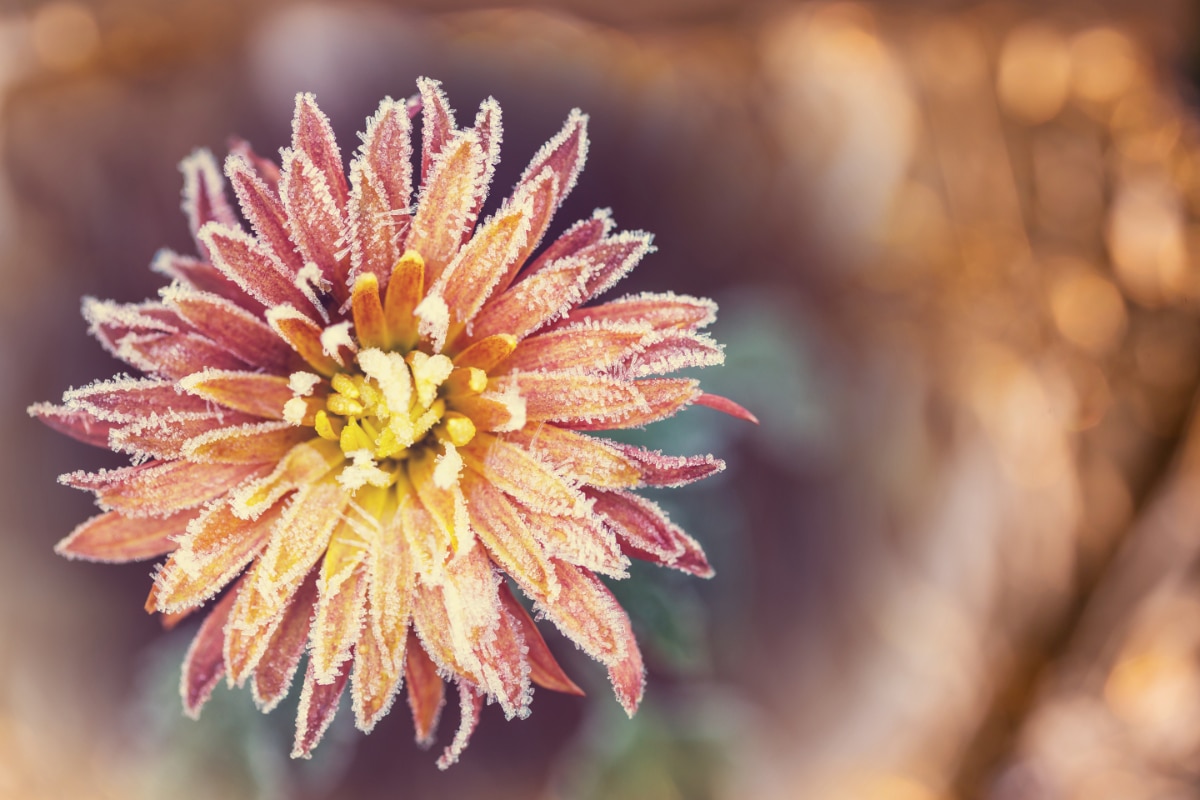
Perennials are special because you don’t have to plant them again and again. But, that also means that they have to survive winter and summer in your area. Some perennials won’t do well in excessive heat, others won’t do well in excessive cold. For this reason, it’s important to know your hardiness zone and which zones the plants perform well in.
Time
Another factor that you need to consider is how much time a perennial needs in terms of maintenance and how much time you’re willing to spend. Some perennials are very high maintenance and need constant care while others once they’re established only need to be watered and deadheaded. Keep in mind that you will have these plants for at least two years and their care will stay the same throughout their lives.
Pick a Mix
Finally, it is important that you pick a variety of flowers. The truth is no plants really bloom all summer long. The way you achieve a blooming garden all summer is by having a mix of different plants. One way you can give the illusion of having a garden that is in bloom all summer is by planting similar colored flowers next to each other. People passing by are unlikely to notice that the yellow flower they saw in late spring is different from the yellow flower they’re looking at in late summer. It will help give your garden a sense of continuity. Keep an eye out for words like “early blooming” or “late blooming” while you shop.
Perennial Flowers that Bloom All Summer
Below I’ve collected 55 perennial flowers for you to chose from and included links to where you can buy them online. I’ve also underlined my personal favorites so you can see exactly what I’m growing in my garden right now.
Agastache
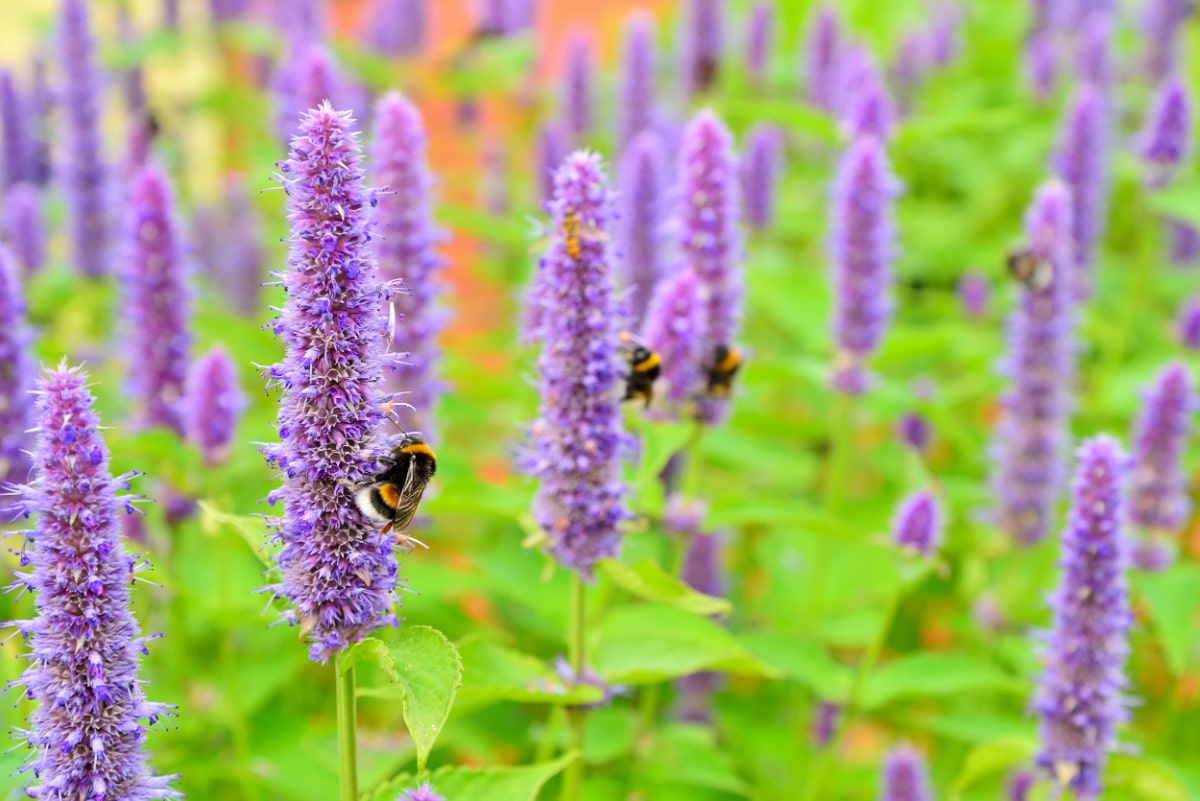
A gorgeous purple flowering plant with blooms that last from midsummer to autumn that bees adore. It prefers full light but will also tolerate partial shade, so there’s no reason you can’t plant it up against an East facing wall of your house.
Alliums
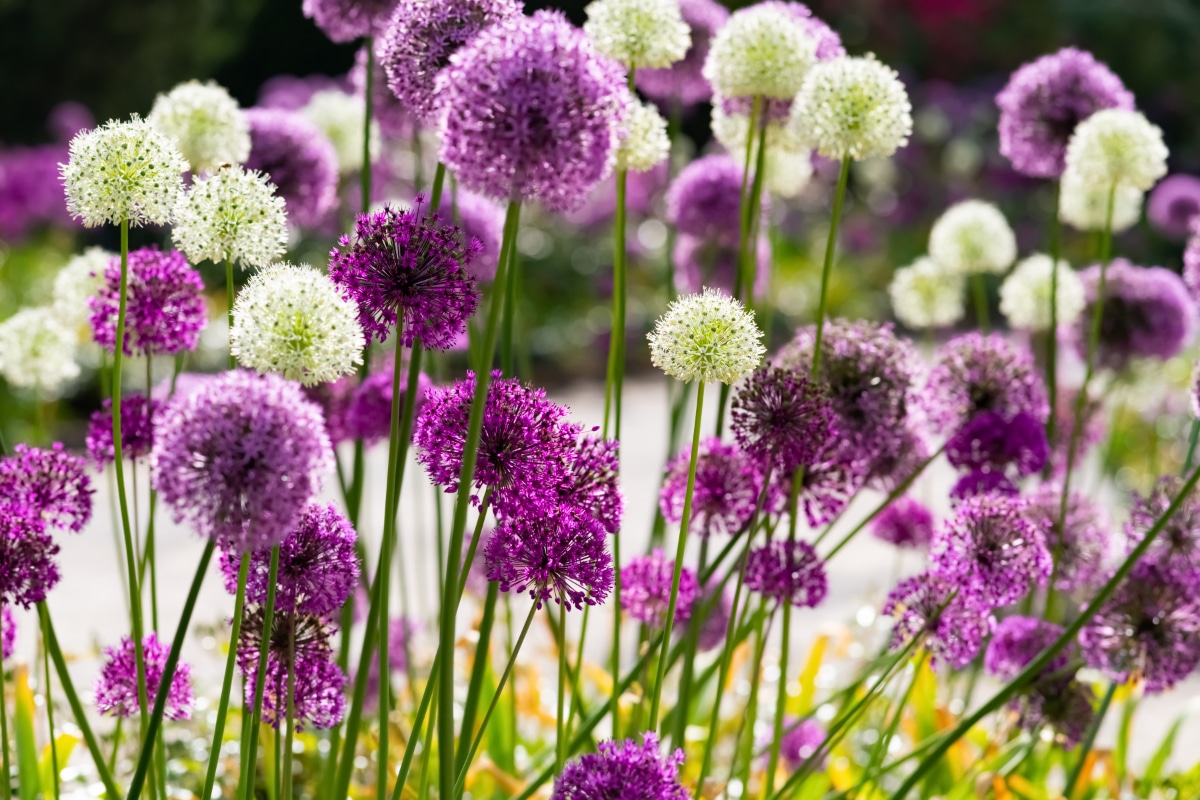
Alliums are ornamental onions that bees absolutely love! They will fill in that flower gap that always exists between spring and summer and come in a few different shades of pink flowers, purple flowers, and white flowers.
Astilbe
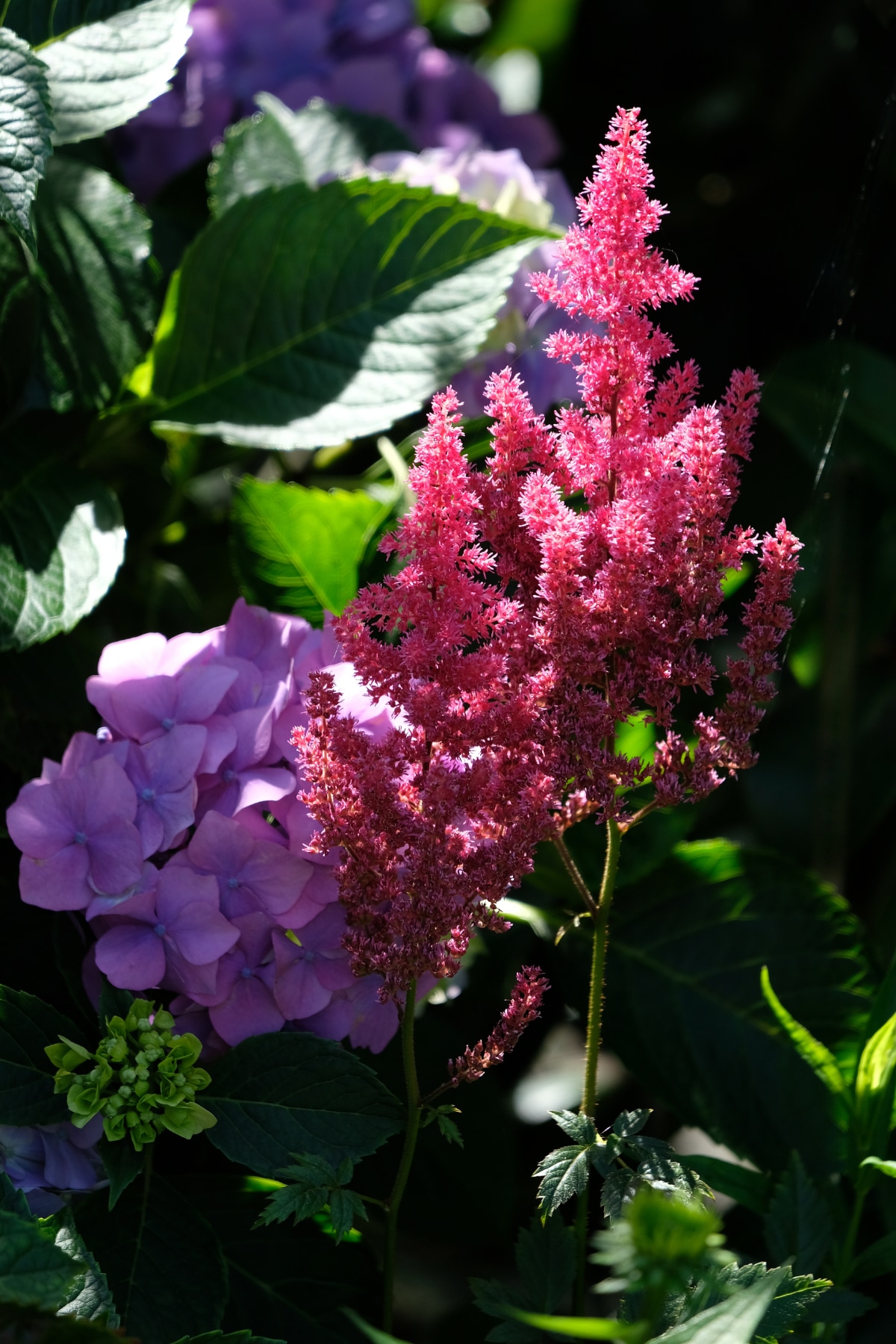
Astilbe is also known as False Goat’s Beard, but I think I’ll stick with calling them Astible. These delicate looking feather flowers bloom from late spring throughout summer, depending on the temperature. They do well in full sun, but this is actually a plant that likes a lot of shade, especially if it gets hot.
Autumn Joy Sedum
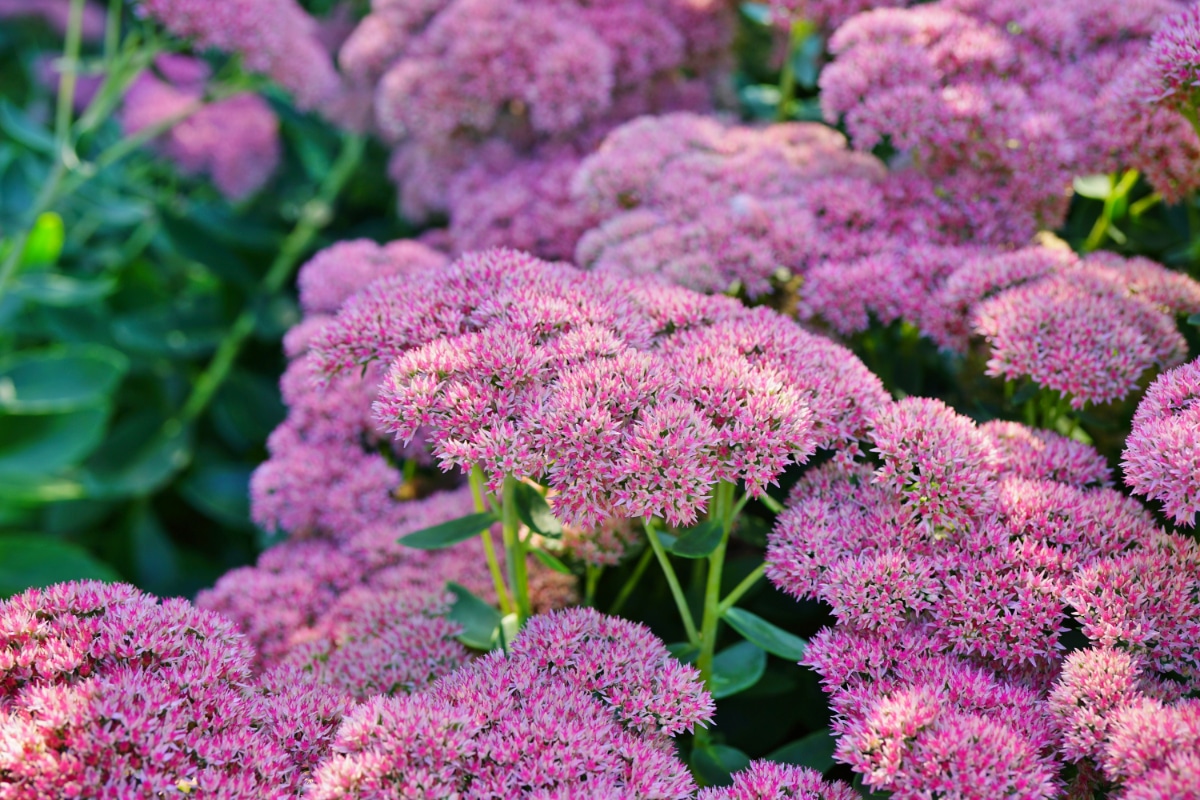
If you’re looking for a low maintenance perennial then you might like Autumn Joy Sedum. It’s incredibly easy to care for while also being extremely attractive to butterflies.
BeardTongue
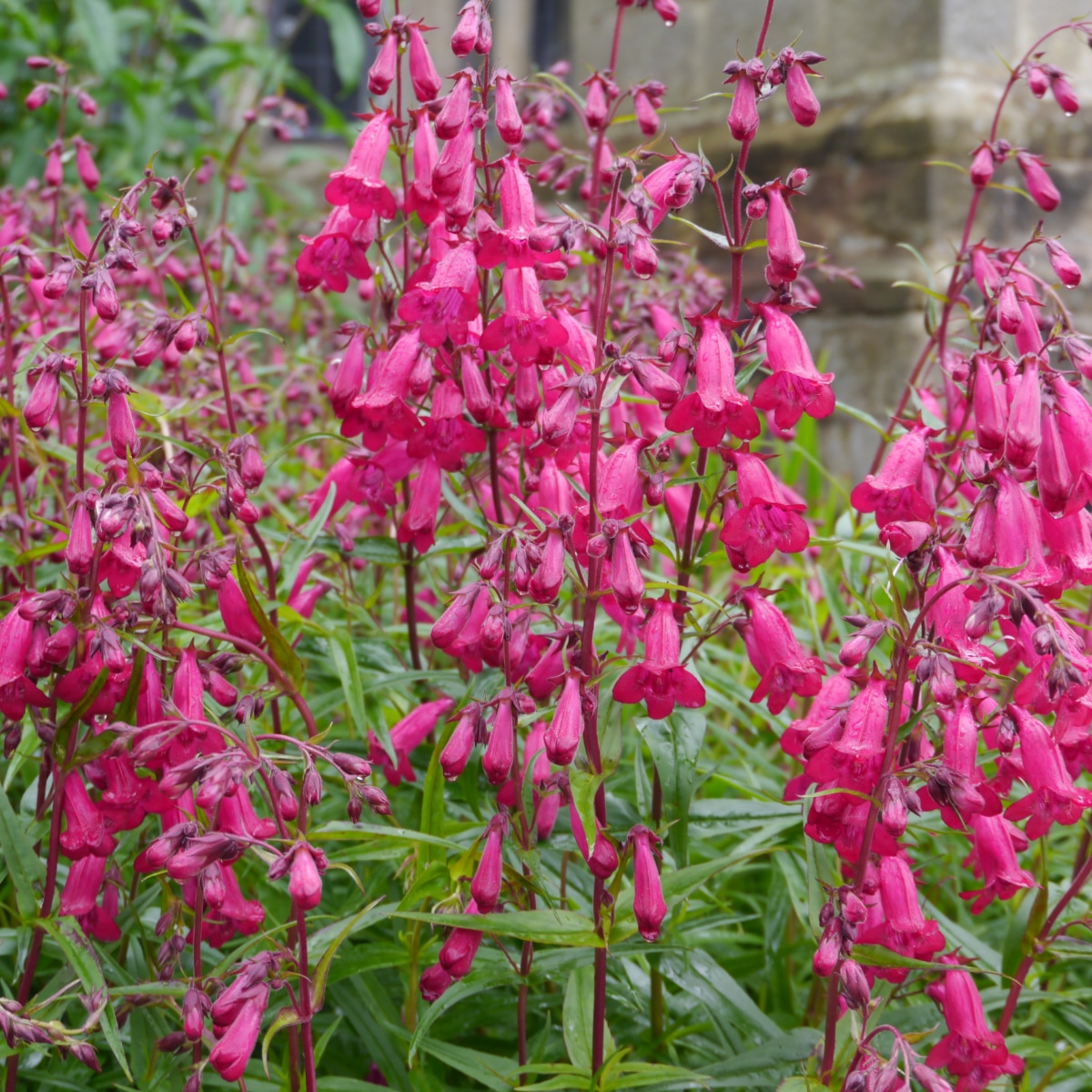
Hummingbirds can’t resist BeardTongue, it’s just the right shape for them and so incredibly colorful. They stand up tall, making them stand out from other plants around them as they bloom from late summer into fall.
Balloon Flower
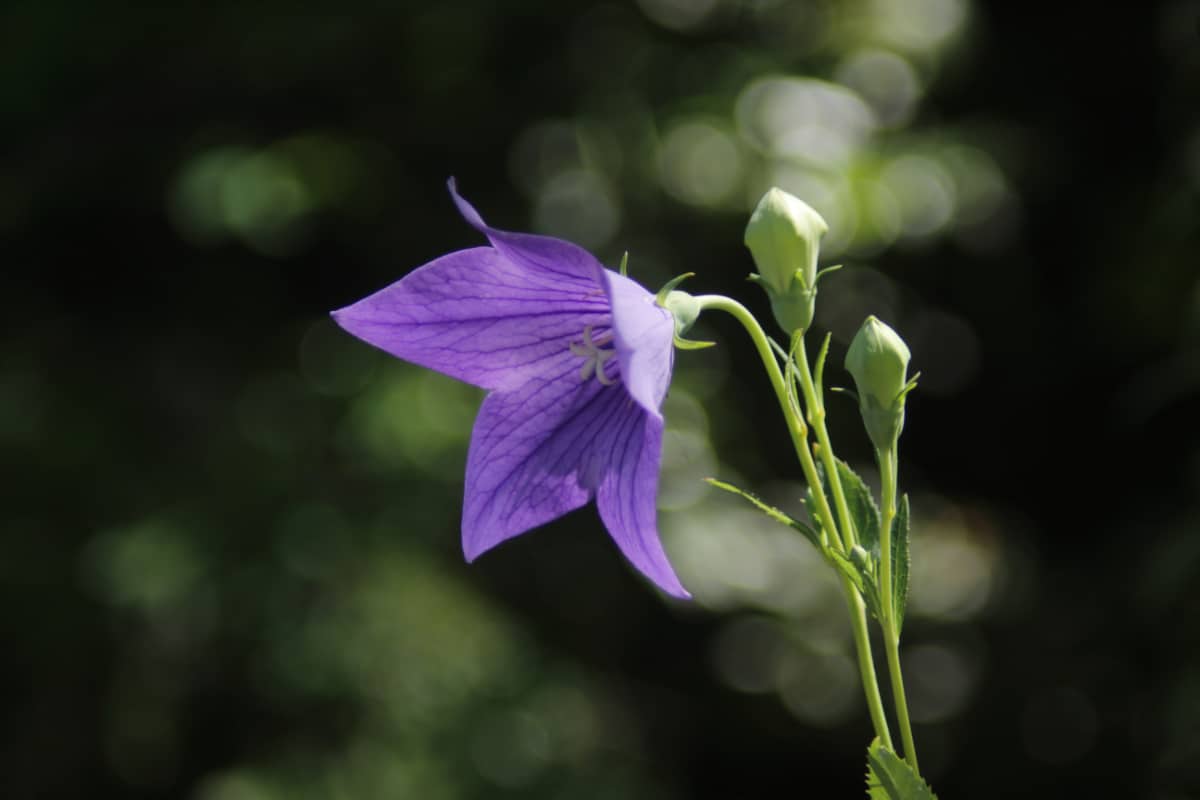
While the balloon flower is gorgeous, its most interesting feature happens before the flower actually opens as it swells up like a balloon. Balloon Flower appreciates soil that stays moist, making it a bit high maintenance.
Black-Eyed Susan
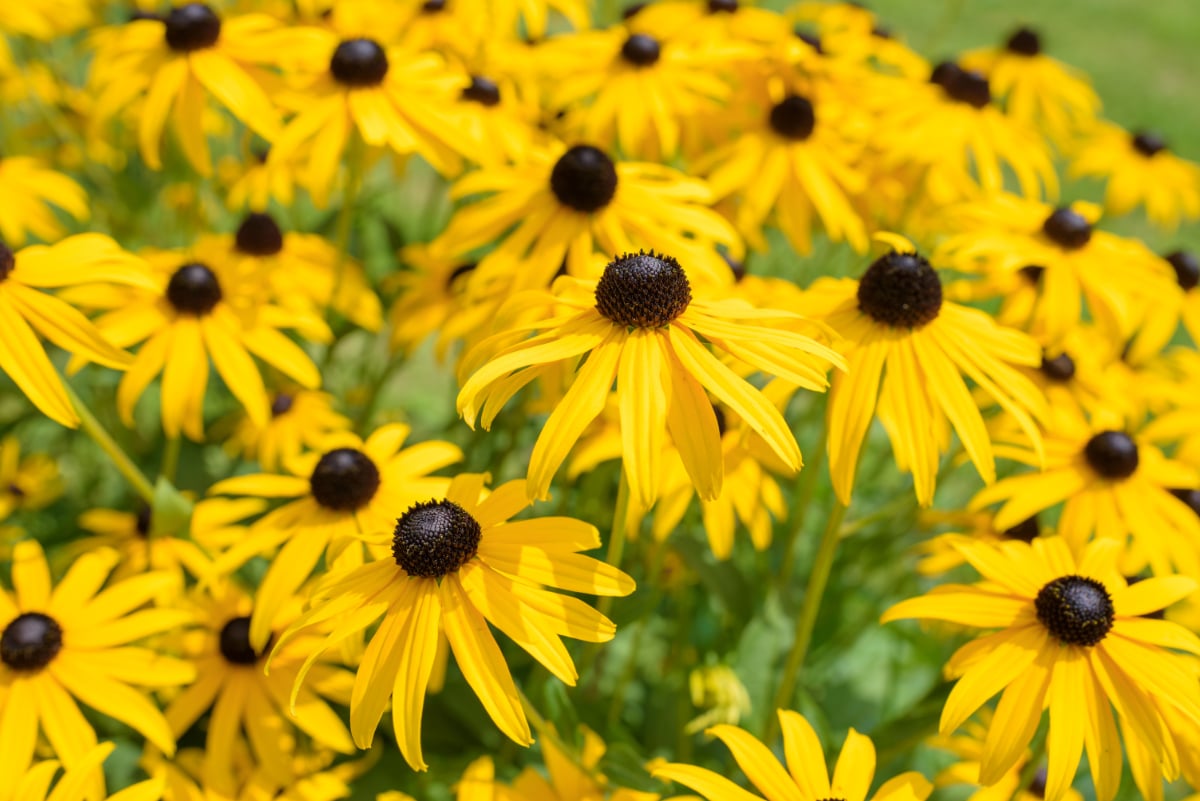
Black-Eyed Susans are one of the easier plants to grow on this list. They’re drought tolerant, which means if you forget to water them for a few days they won’t complain. They also self-seed, meaning you won’t have to plant them again and again.
Blanket Flower
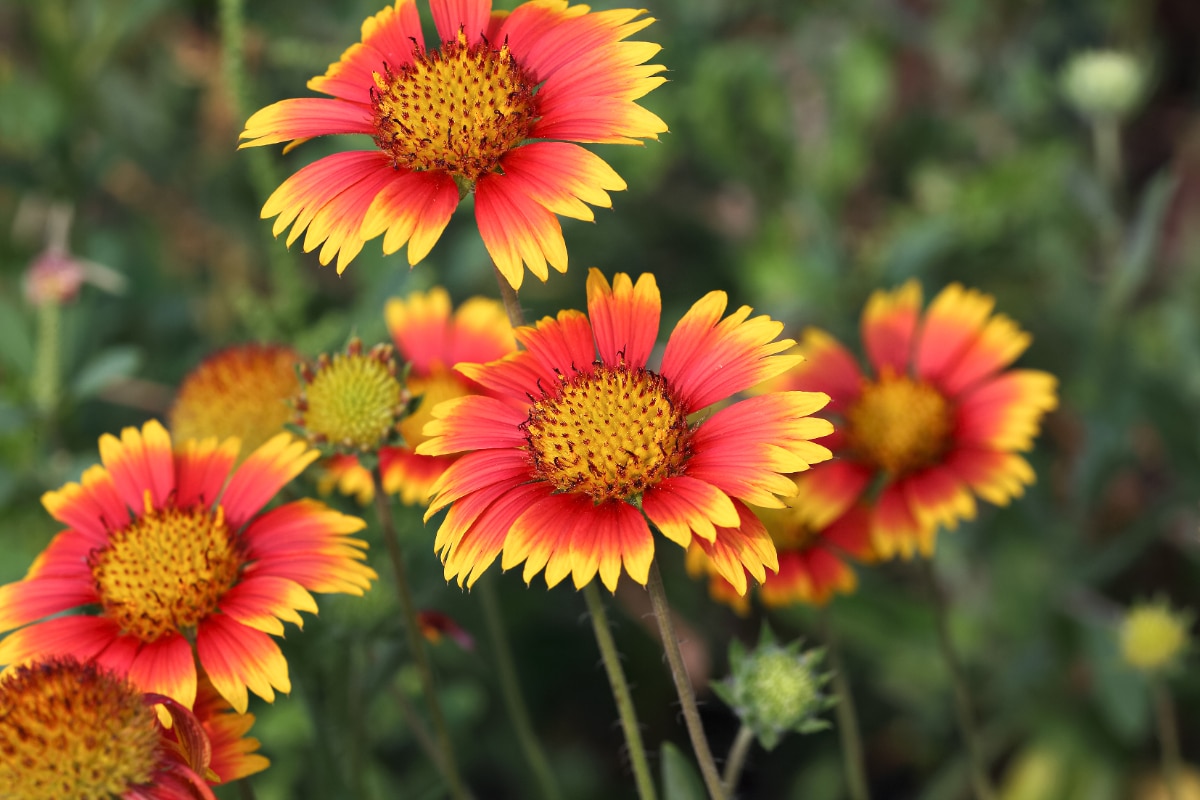
Blanket Flowers are a gorgeous addition to your garden, but their flowers are short lived. So while you absolutely should grow these, you’ll want to find another plant to compliment it for blooms all summer.
Bleeding Heart
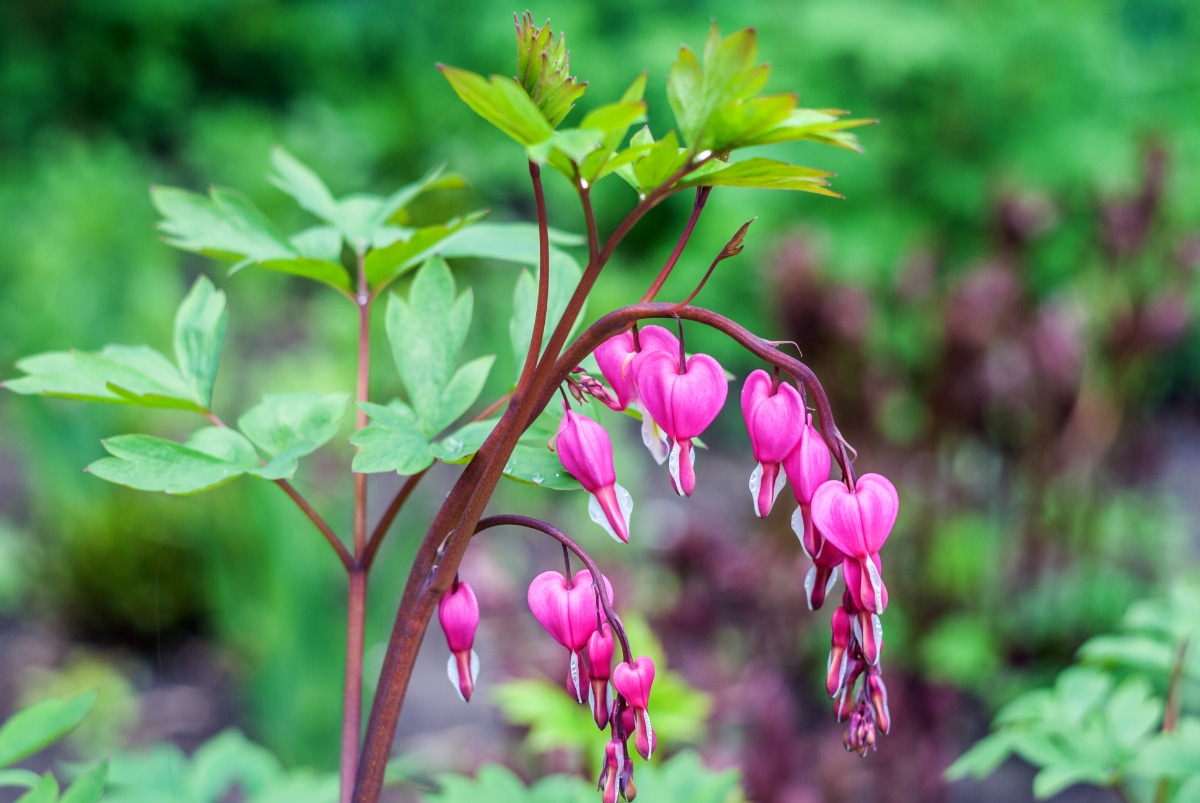
Bleeding Hearts are gorgeous, delicate little flowers that pack a big punch. These are VERY poisonous to Humans, Horses, and Dogs. As such, I can only recommend it for older families who don’t have pets.
Blue Clips Bellflower
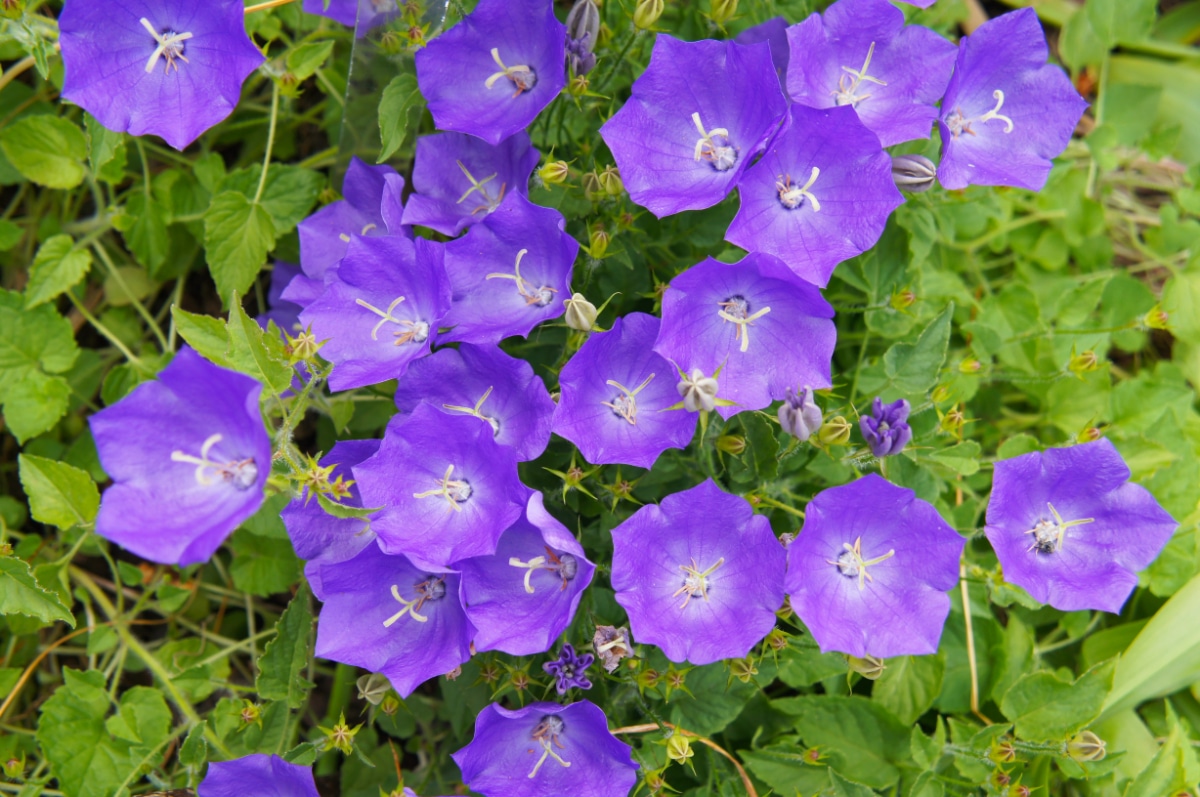
Keep removing dying flowers from your Blue Clips Bellflower and it will keep putting out more flowers for weeks and weeks throughout the summer.
Blue Lupine
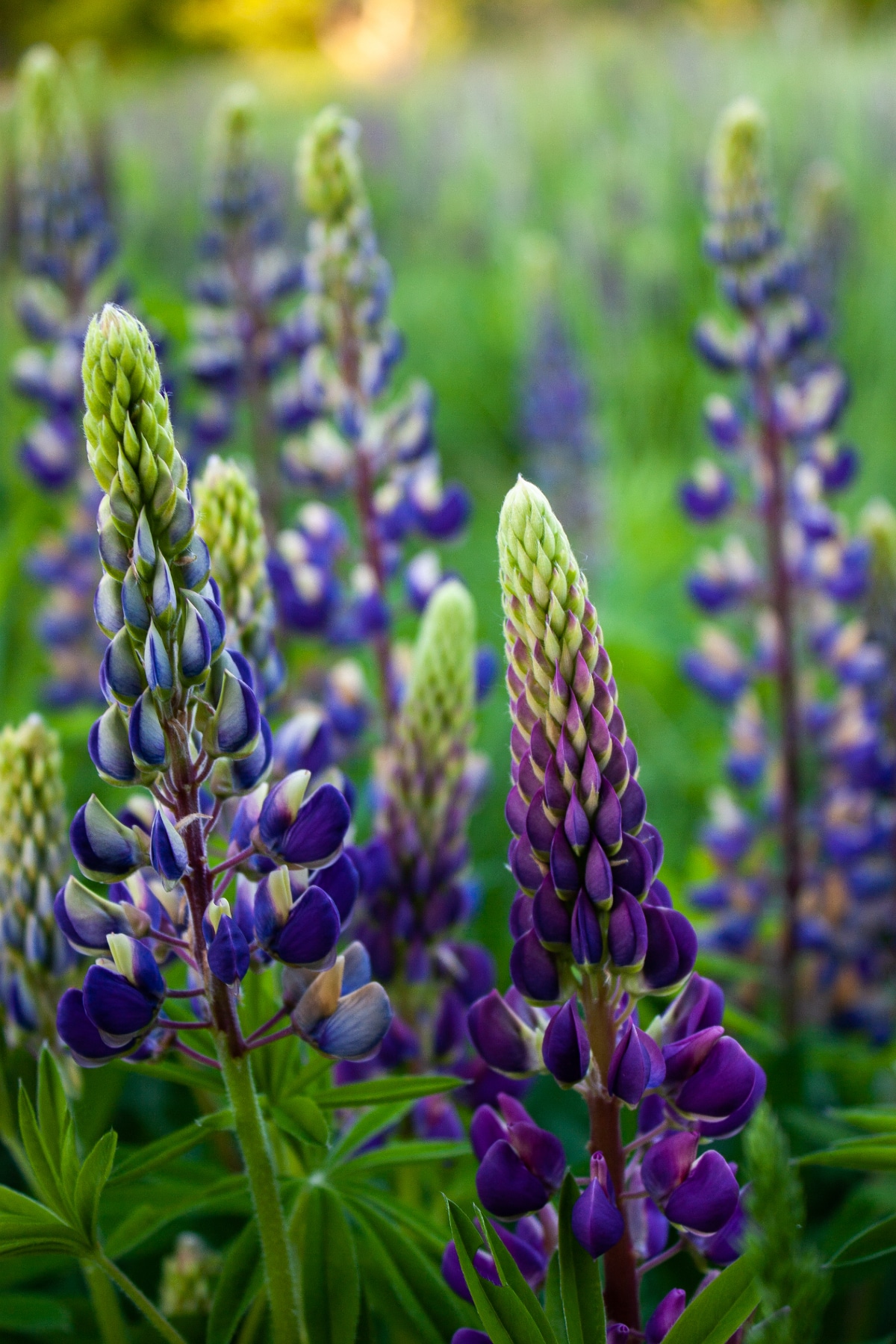
Blue Lupine is related to the pea plant and hates heat and humidity. For that reason, it isn’t very good for growing in the south. But further north you can grow it to help fix the nitrogen in your soil.
Bugleweed
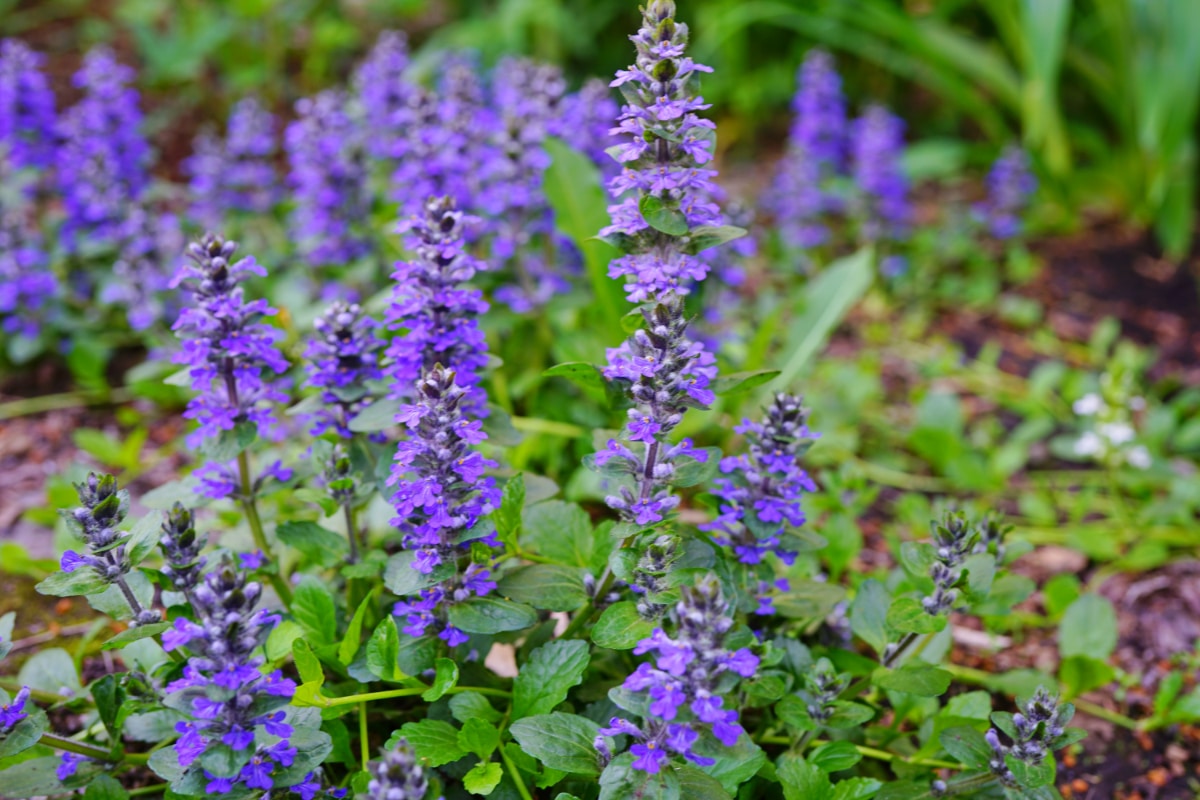
If there’s a spot in your yard where you have trouble getting your lawn to grow then try planting Bugleweed, this is where they thrive!
Butterfly Bush
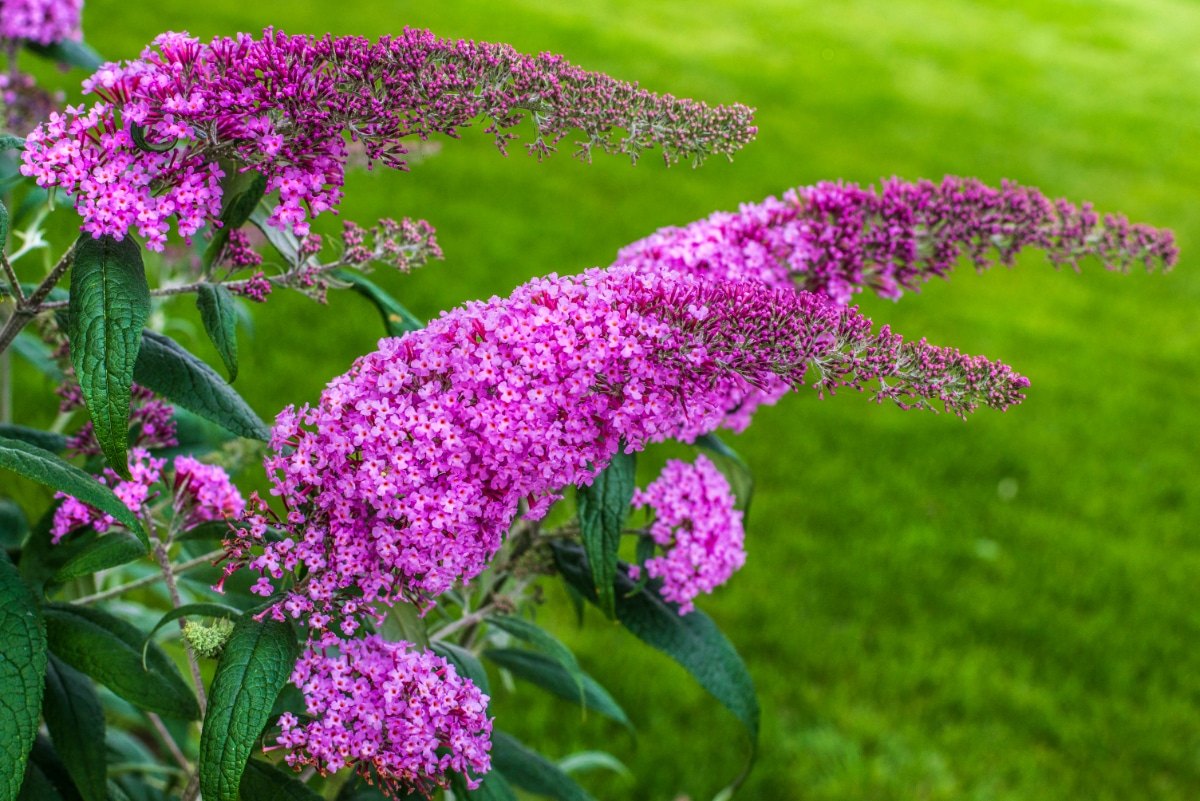
Butterfly Bushes love heat and light, but they also like a lot of water. So while these gorgeous plants will attract a lot of butterflies to your yard you will have to work with them quite a bit.
Catmint
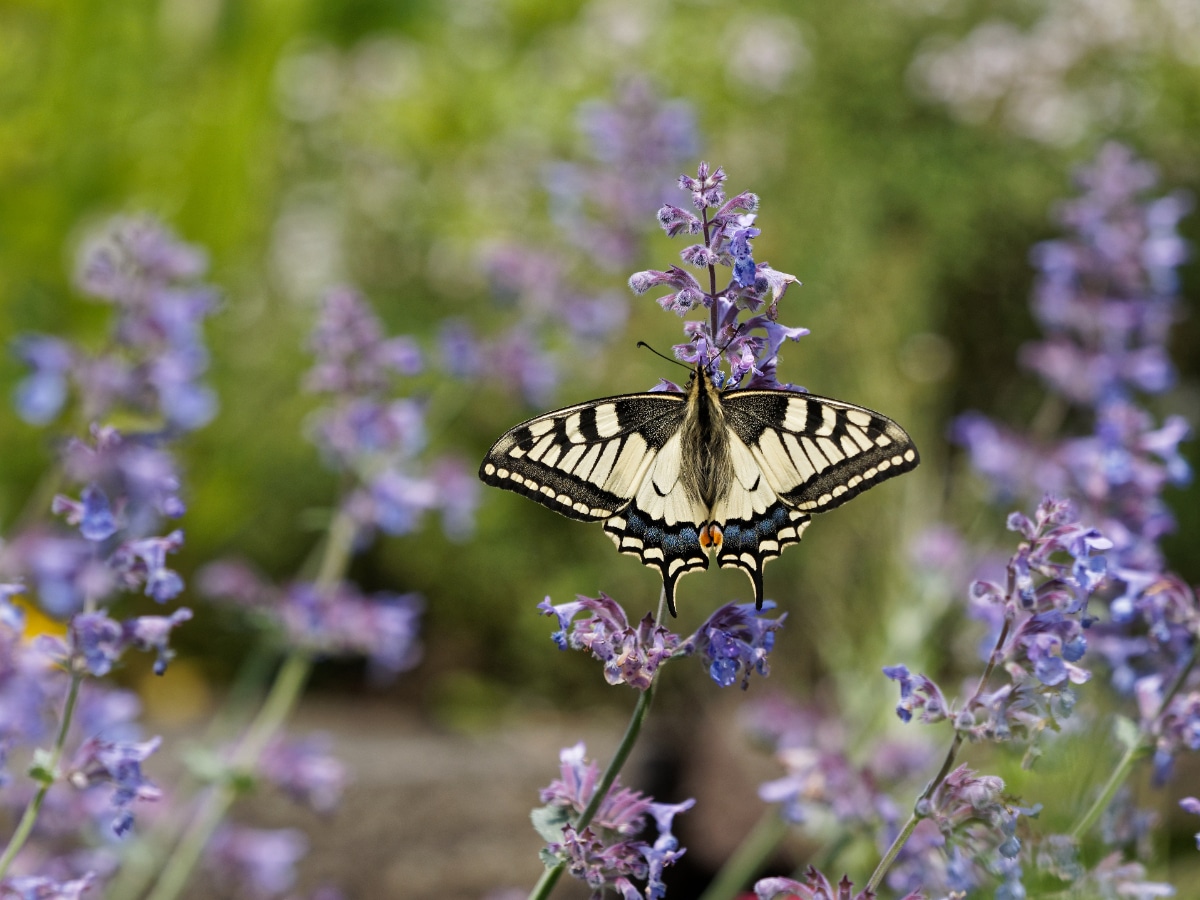
You might want to think twice about planting Catmint if there are a lot of cats in your neighborhood. They will come from all around to roll around and chew on Catmint, aka Catnip.
Clematis
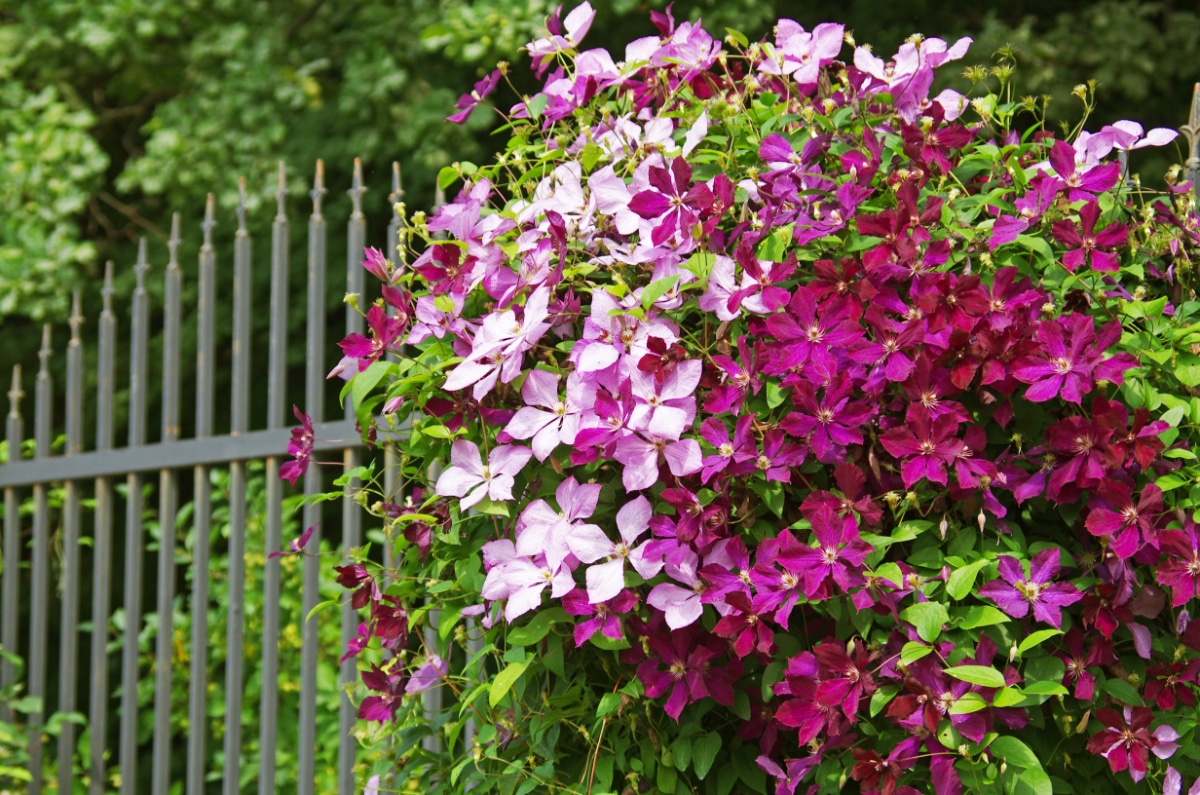
Clematis have a gorgeous purple flower and will happily climb up anything nearby. But, you will have to keep it well watered. Some varieties of Clematis will bloom in late spring if you live in warm enough climates.
Coral Bells
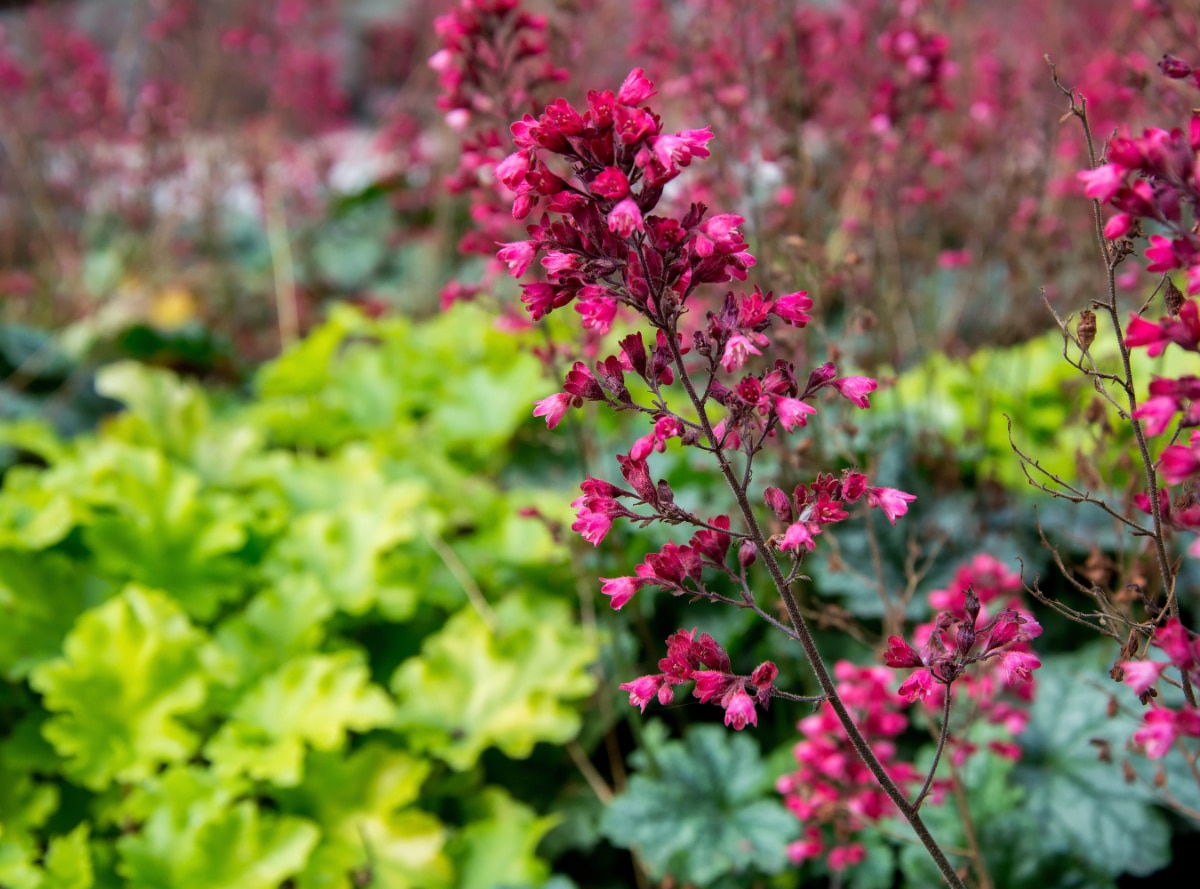
Coral Bells is another low maintenance flower that looks great in your yard. There’s no need to deadhead these as they won’t reflower and they need very little care. They’re happy enough to just grow on their own.
Coreopsis
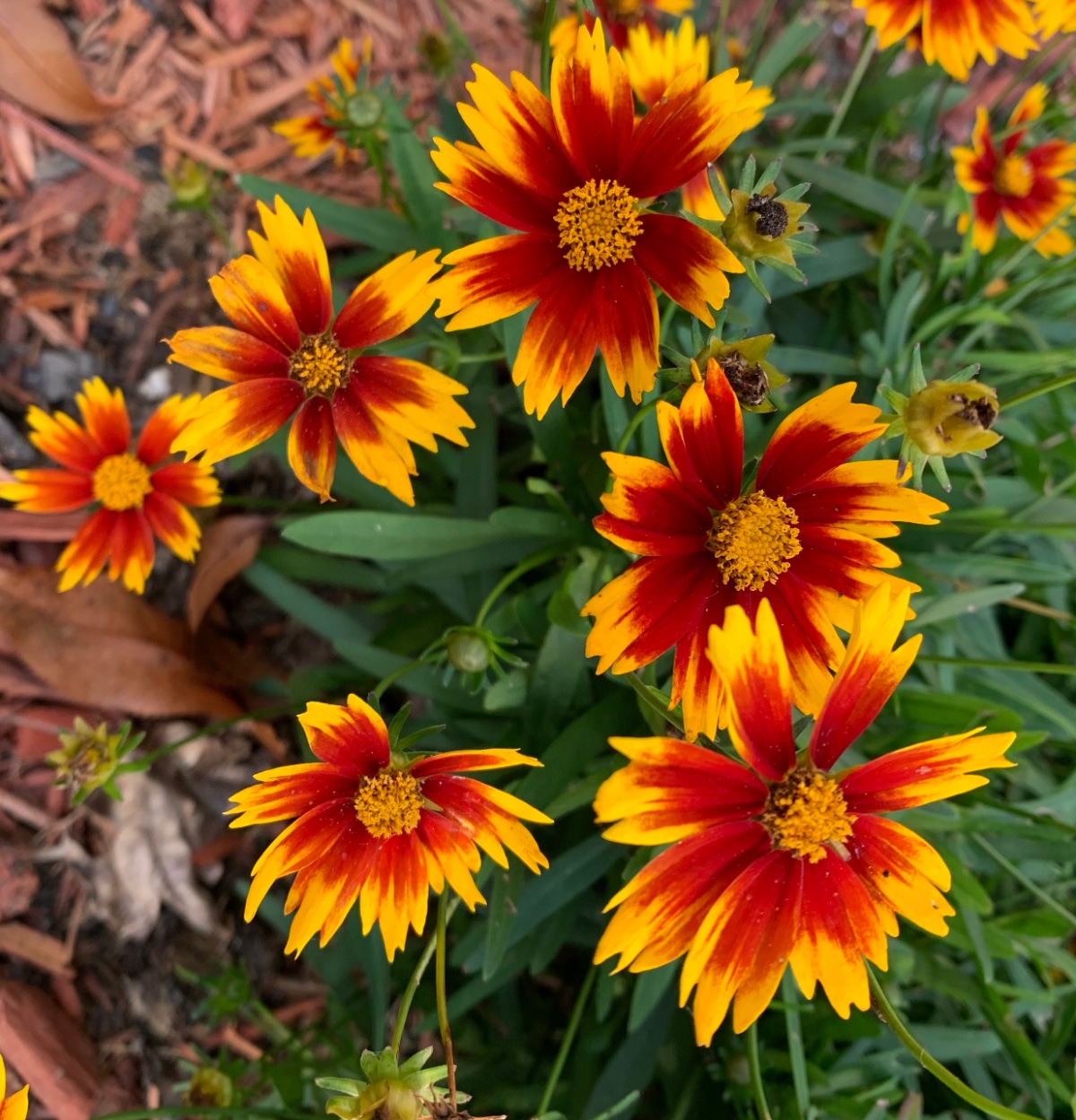
With regular watering, Coreopsis will keep blooming all summer long, making it one of the few flowers that will bloom the whole season.
Cranesbill Geranium

Bees love Cranesbill Geranium which is also sometimes called Hardy Geranium. It grows well in the sun or shade.
Creeping Thyme
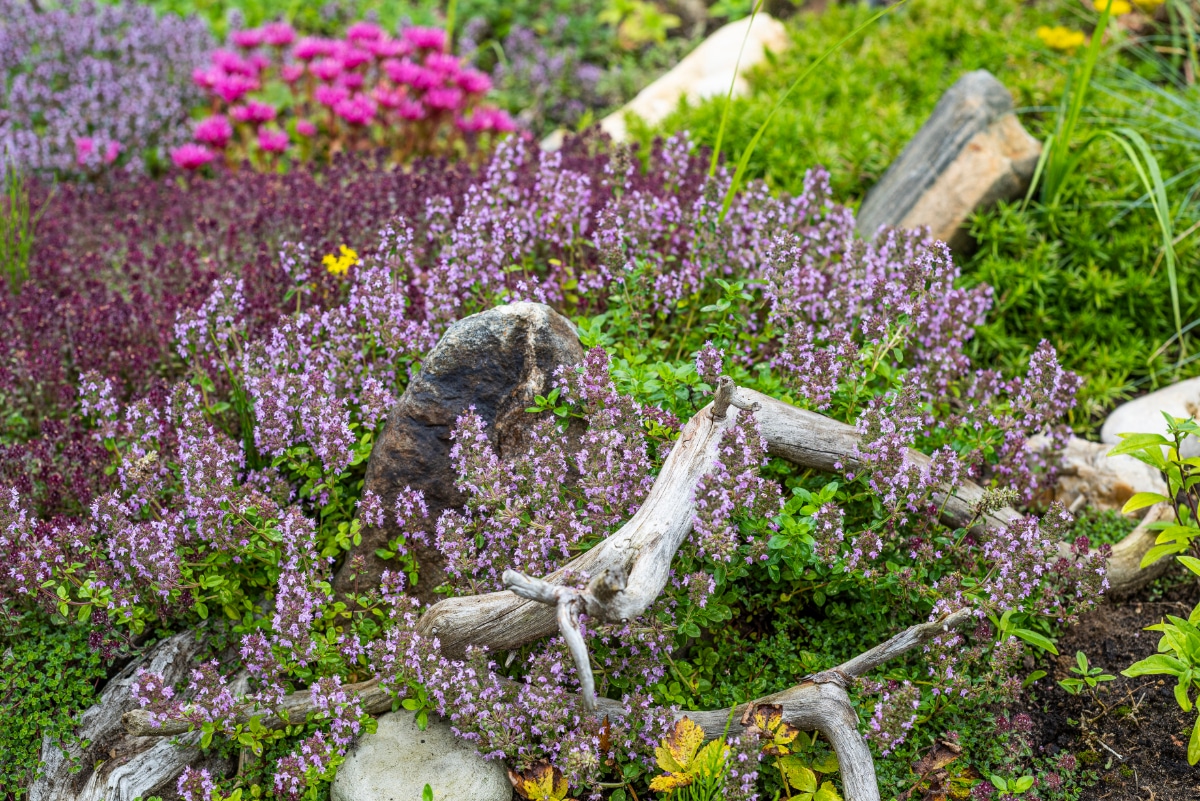
While this thyme is edible, it isn’t quite as strong as other types we eat. Instead, it makes an amazing decorative piece.
Dahlias

Some Dahlias can get up to 10 inches wide, but the smaller ones are commonly found in bouquets. You are sure to love these so much that you won’t want to plant anything else.
Dalmatian Bellflowers
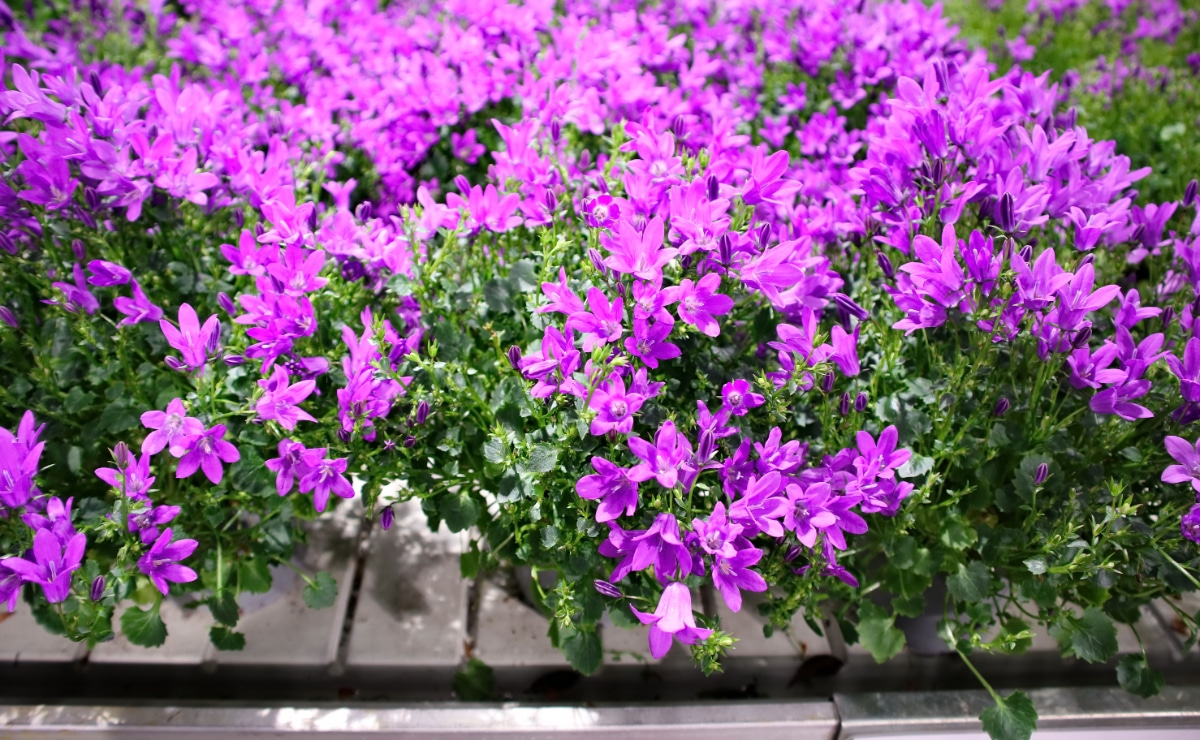
Dalmatian Bellflowers will grow just about anywhere in just about any conditions, except in warmer climates where it prefers shade.
Daylilies

They may be gorgeous but Daylilies are a lot of work too so be prepared to have to give them some attention. You also should not have them anywhere in your yard or your house if you have cats. Even the water from a vase of them could kill your cats.
Delphinium
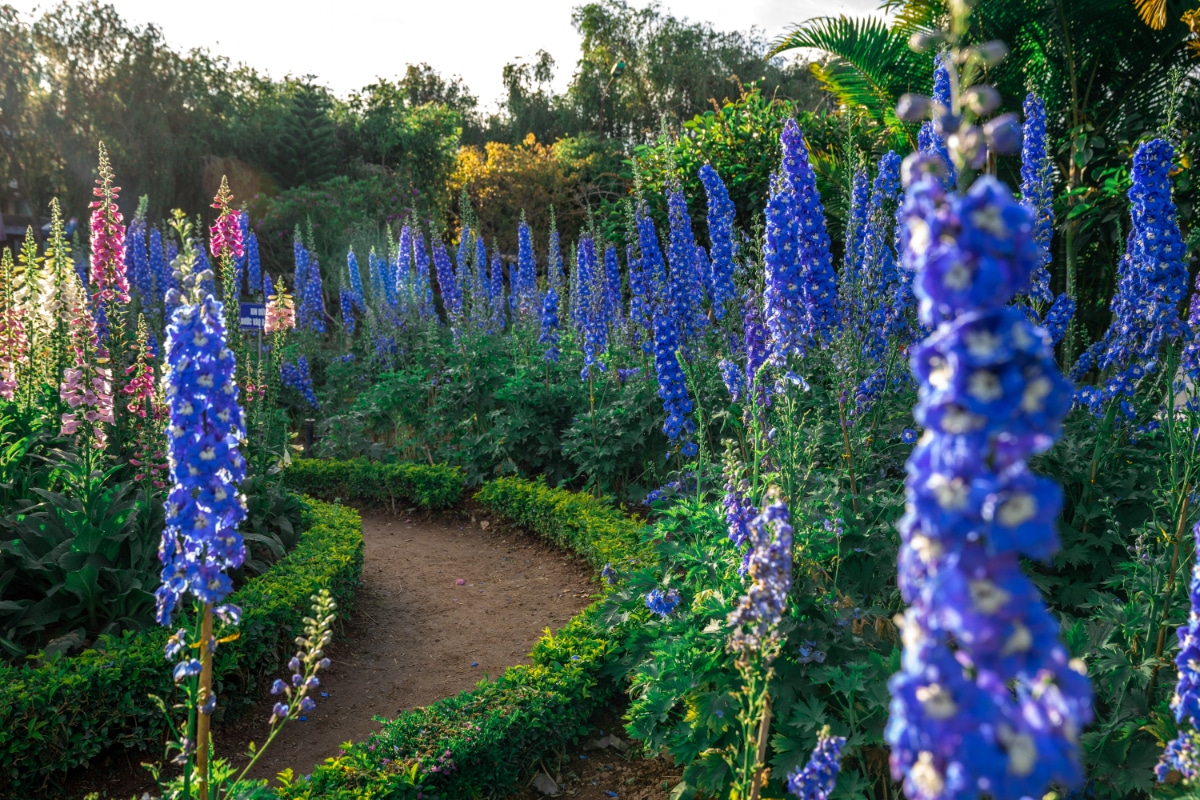
Delphiniums need to replaced every 2 to 3 years as their blooms decline, but while it’s around the gorgeous blue flowers are a sight to behold. However, if you have small children I would recommend not growing it as it is poisonous.
Dianthus
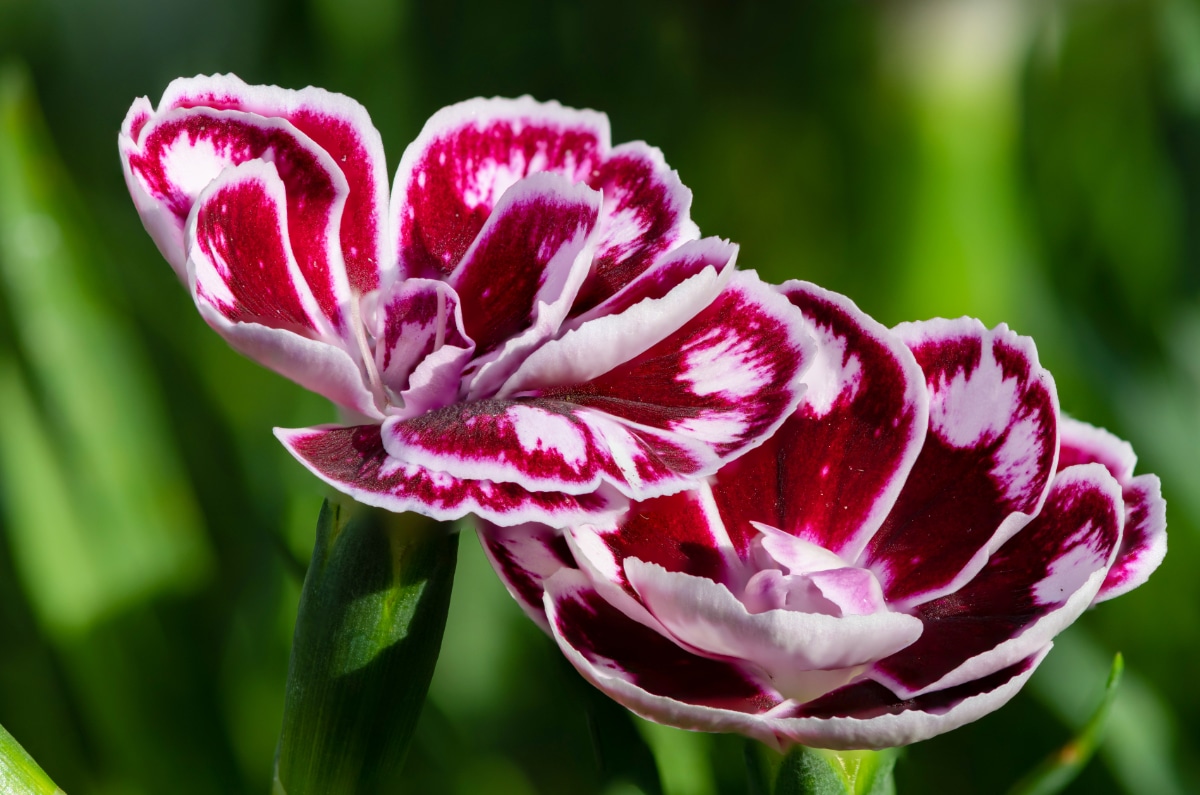
Dianthus are precious little flowers, not only do they look pretty, but they’re also sensitive souls. They need soil that is just right, a little bit alkaline, and you shouldn’t mulch around them either.
False Indigo
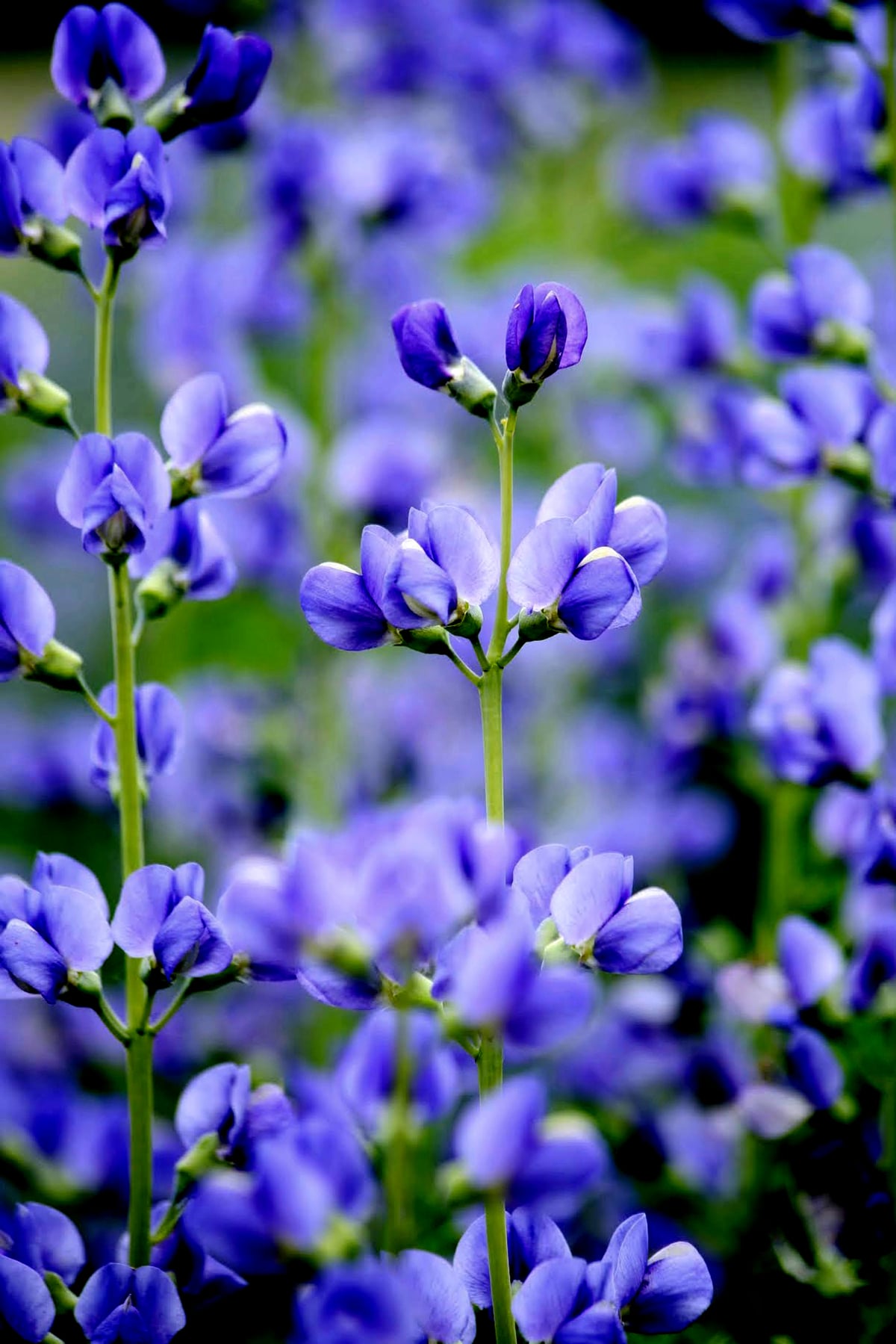
If you have a large space to fill then you might want to consider False Indigo. It becomes a nice full bush when it has plenty of sunlight.
Foamflower

If the area you’re working with has a lot of shade Foamflower might work well for you since this is where it thrives. There are a few different colors you can find the flowers in, including; white, pink, and purple.
Hibiscus
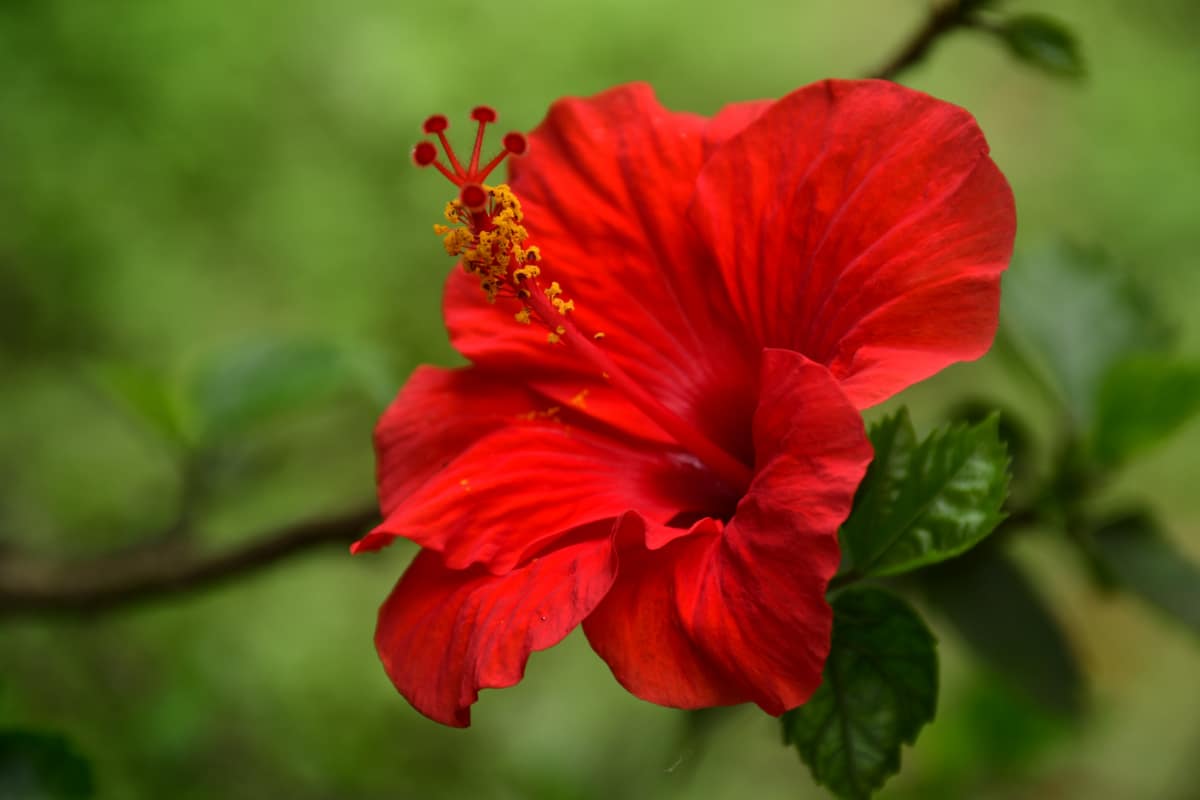
The first thing you should know about Hibiscus is that it is a tropical plant that loooooves the sun. So if you aren’t getting a full day’s sun don’t even think about it. Unless you want to grow it in a container and move that container all day every day.
Gerbera Daisies
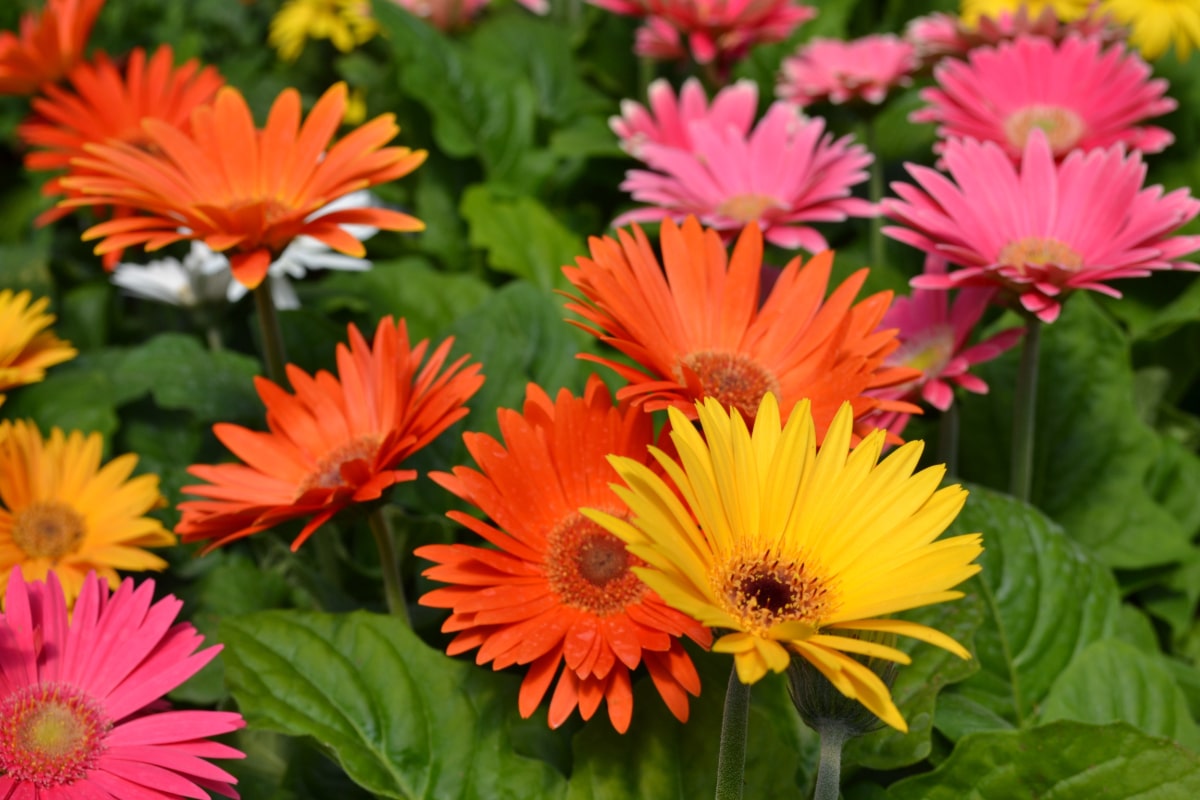
Gerbera Daisies grow wonderfully inside and outside, giving bright bursts of color wherever they are. But don’t try to transplant them, they don’t like moving.
Gloriosa Daisy
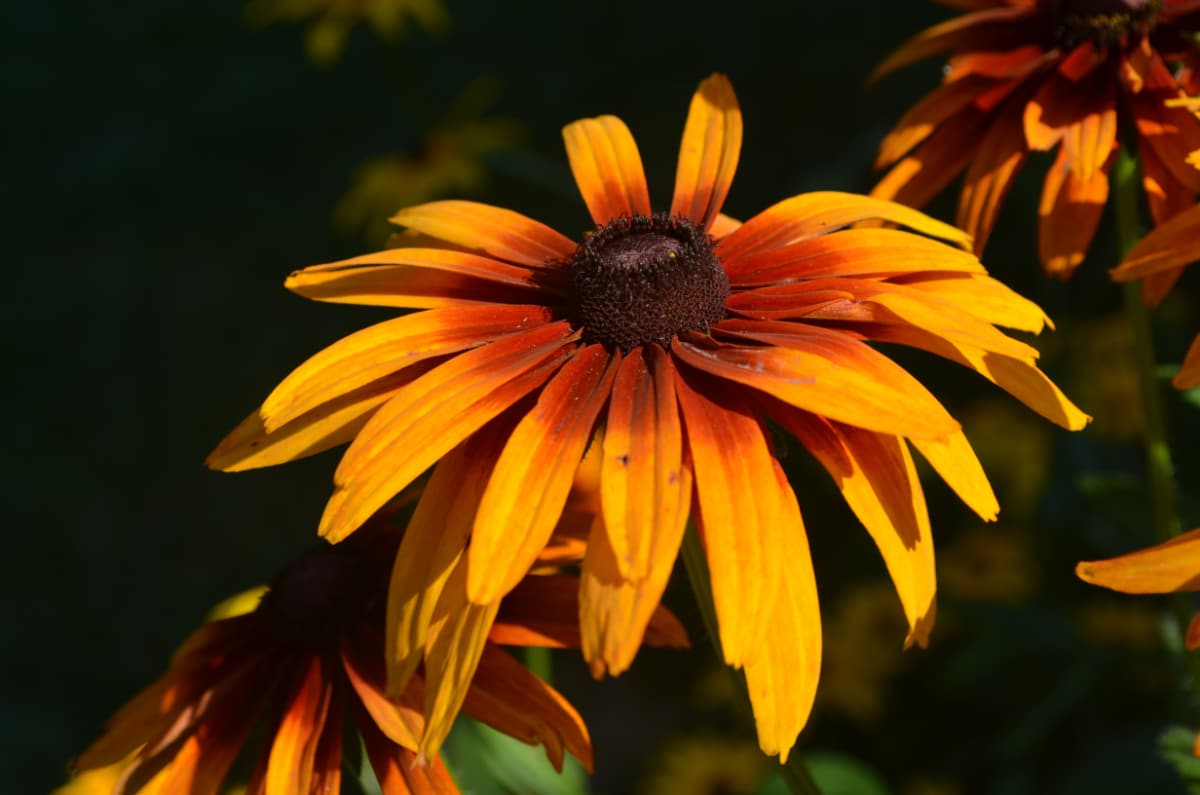
Gloriosa Daisies are some of my favorite for their unique colors and the fact that they are drought tolerant once they’re established.
Hostas
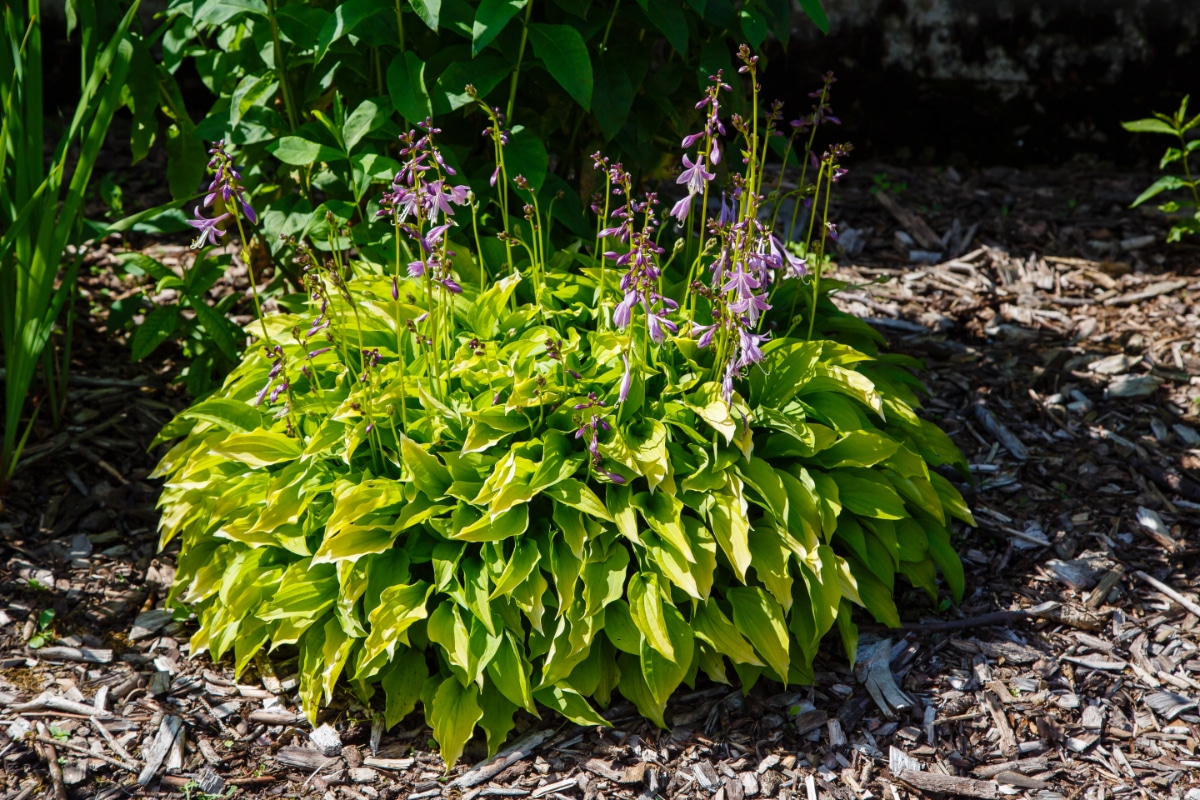
Most people grow Hostas for their gorgeous foliage, but they’ve got amazing little flowers too!
Hydrangea
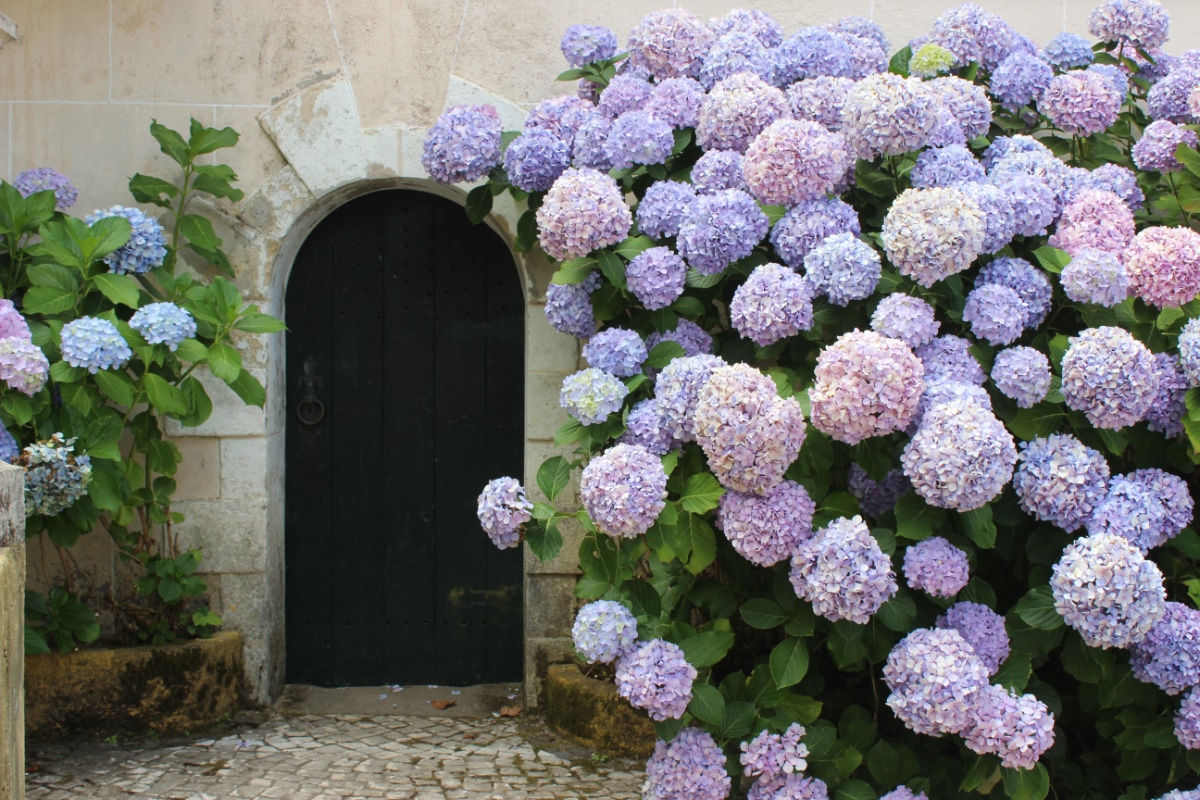
Many of us grew up with Grandmothers who had massive bushes of Hydrangeas growing up against their houses, and for good reason! They’re colorful, cheerful, smell wonderful, and easy to take care of.
Ice Plant
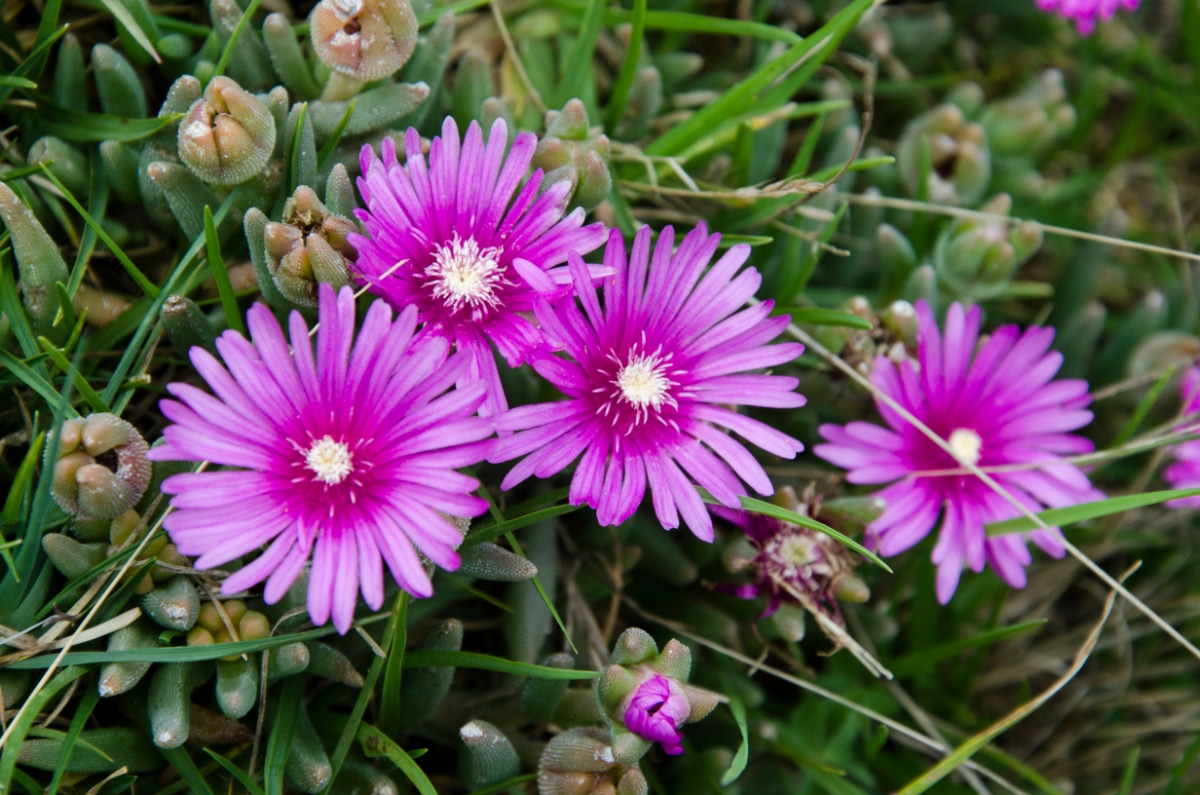
Ice Plants are a fantastic low profile, ground covering flowering bush that spreads VERY easily. It will completely take over if you allow it to.
Jack Frost Large Leaf Brunnera
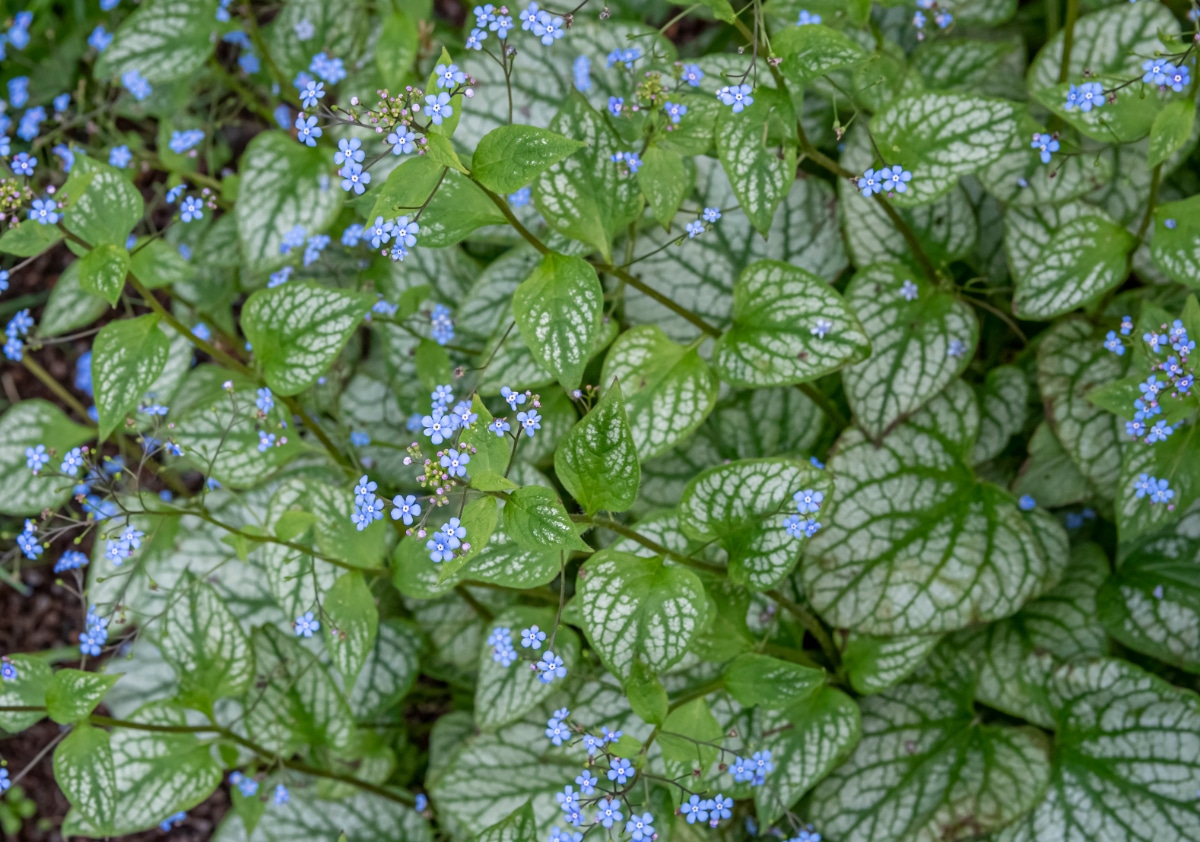
Instead of Hostas, you might consider growing Jack Frost Large Leaf Brunnera if you have a lot of slug pressure in your area. These Brunnera are unappetizing to slugs and when slugs get a taste of them they’ll go somewhere else, making them a great companion plant.
Jacob Bee Balm
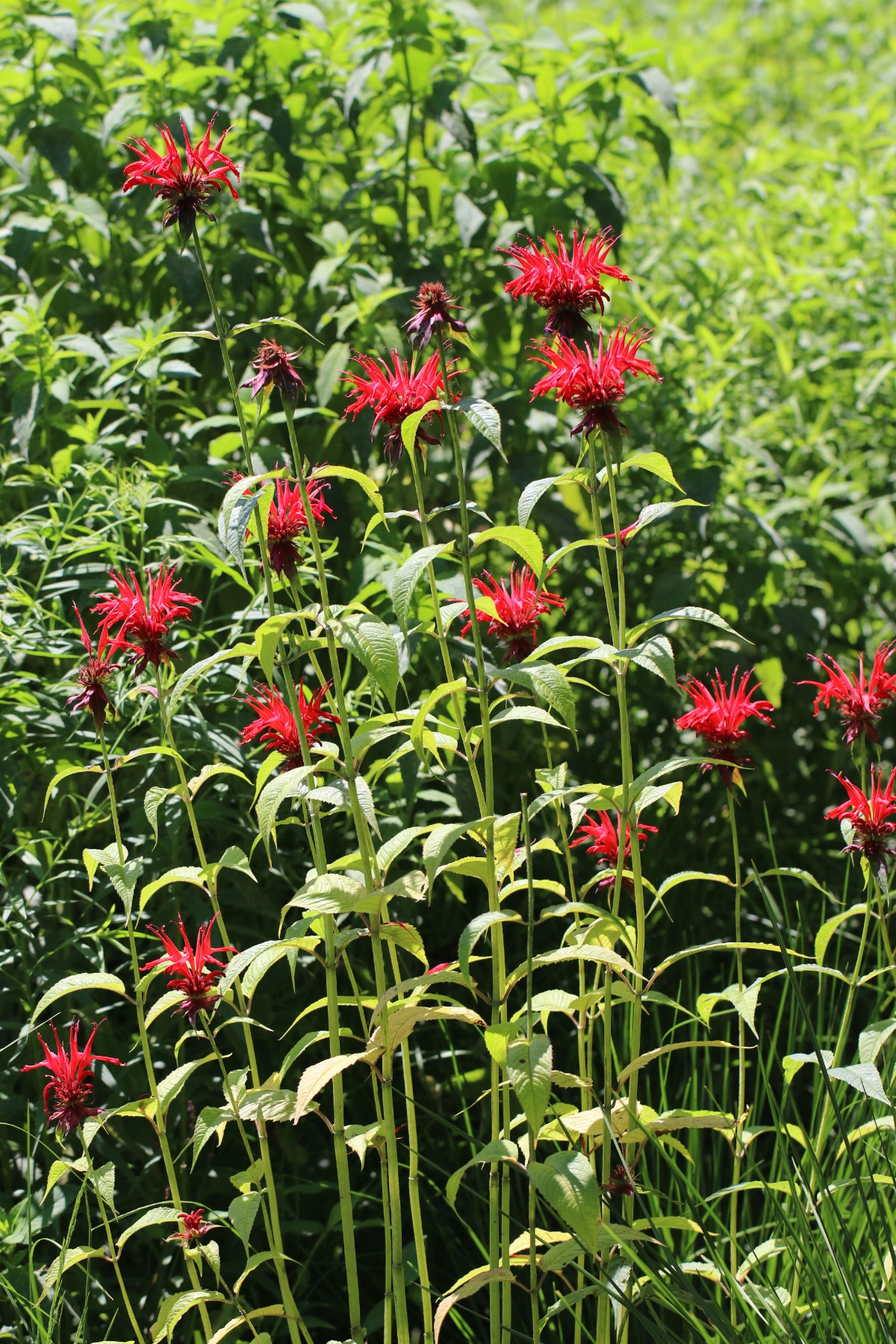
If you’re looking for a plant with huge flowers and effortless disease resistance then Jacob Bee Balm is the plant for you.
Jolly Bee Geranium
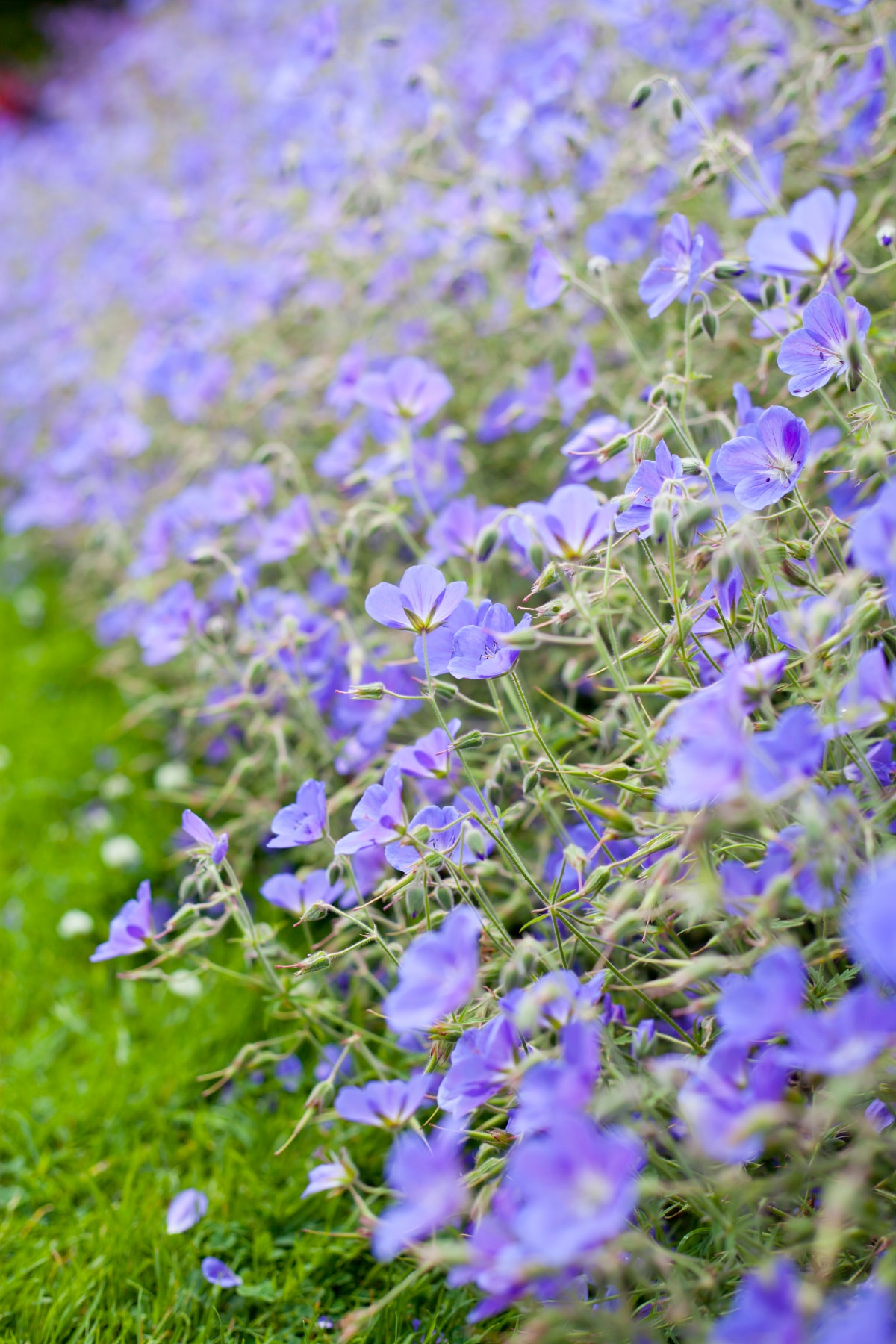
Depending on where you live your Jolly Bee Geranium might flower all the way through summer and fall.
Lavender

Lavender is the ultimate bee attractor in the garden and it has some great medicinal uses too! It’s an amazing plant for beginner gardeners too.
Lucifer Montbretia
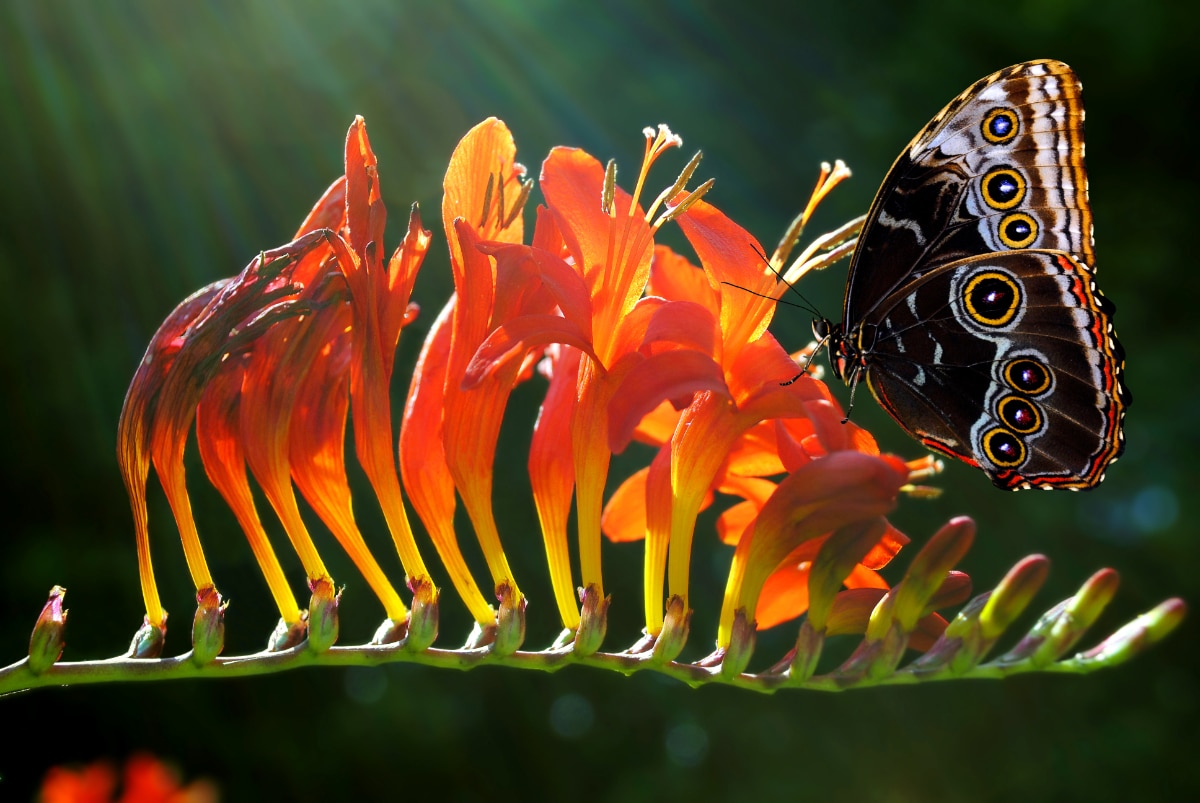
Lucifer Montbretia grows well in places with pretty harsh winters while also giving gorgeous red flowers in the summer. This will do well in northern climates where others on this list don’t.
Monroe White Lilyturf
Monroe White Lilyturf makes an excellent border plant to separate grass from walkways with its gorgeous white flowers.
Moonbeam Coreopsis
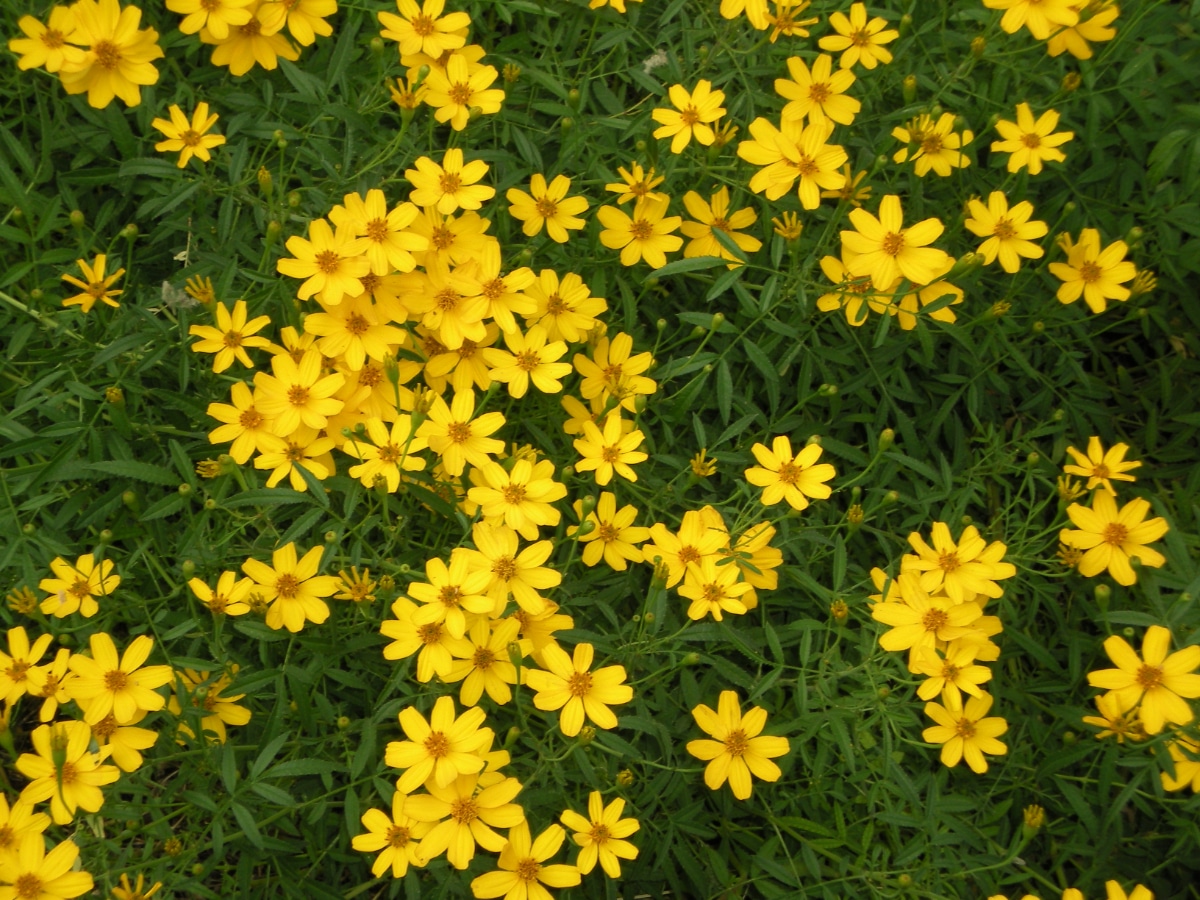
Moonbeam Coreopsis is one of the plants on this list that might not actually bloom in the summer where you live. It could bloom anywhere from June to October depending on the climate you’re in.
Peonies
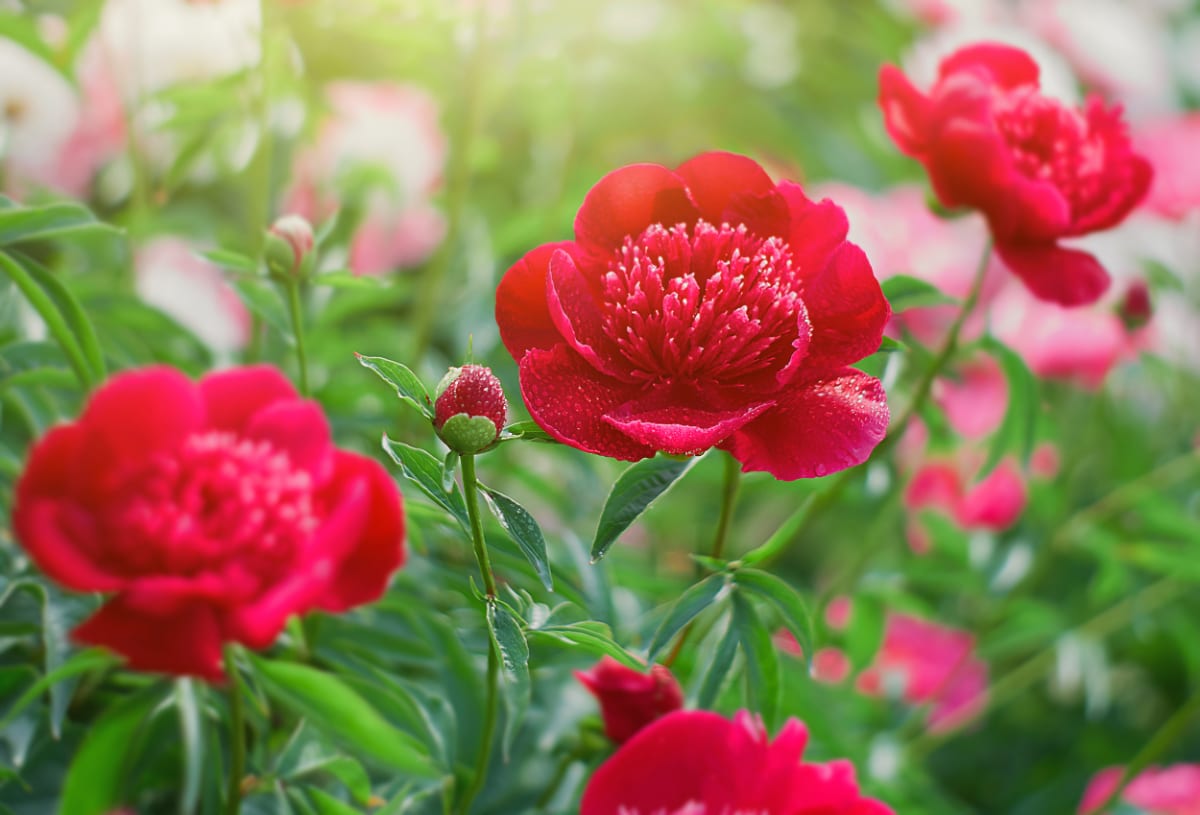
Though they are arguably one of the most popular and most gorgeous flowers you can grow in your garden they actually only flower for a week or two. Still, it’s worth having one or two in your yard if you can spare the space.
Phlox
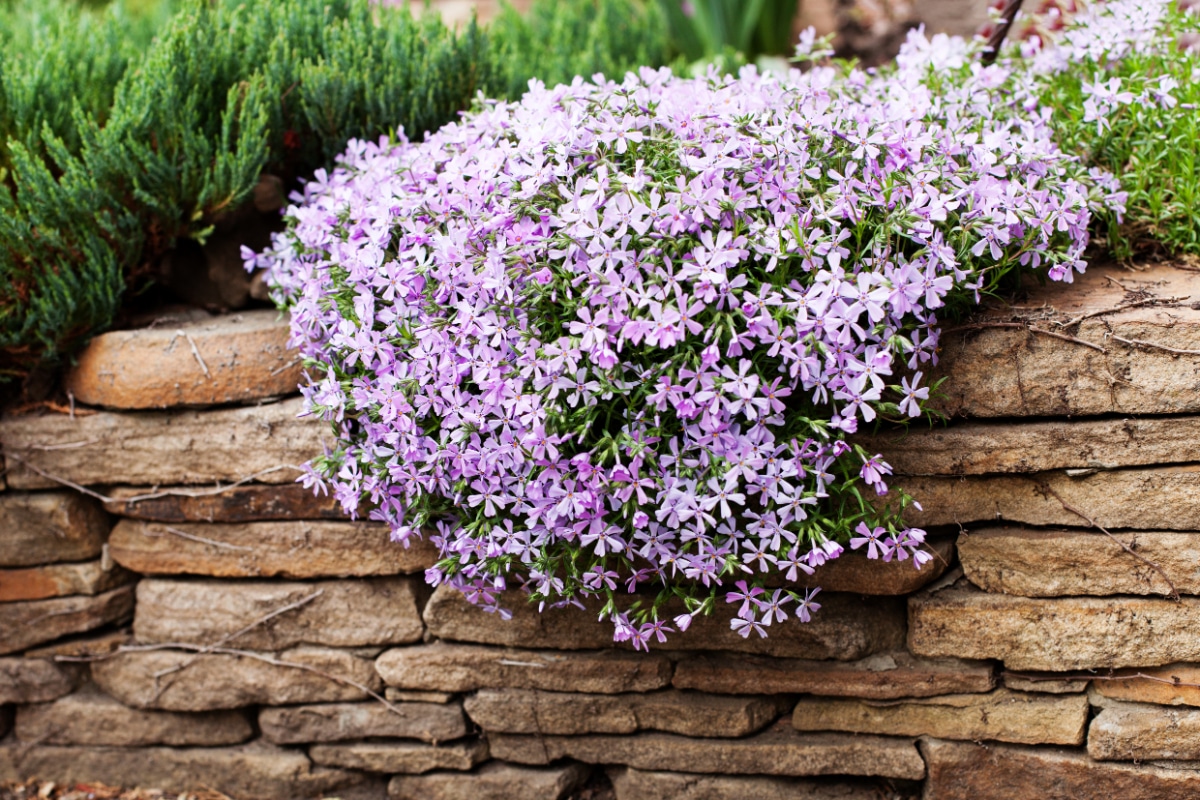
Phlox comes in a wide variety of colors and looks gorgeous anywhere it’s put. Though it needs well draining soil, so don’t plant it anywhere puddles develop during a hard rain.
Purple Coneflower
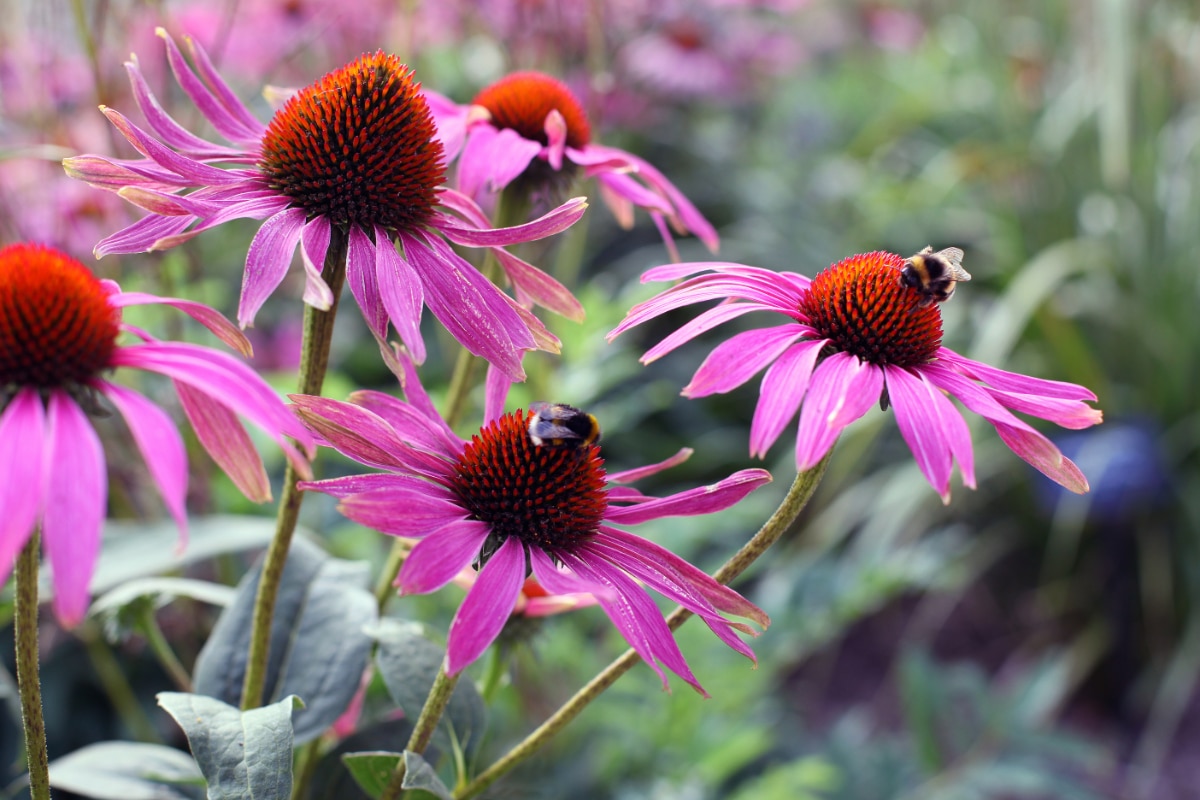
Caring for Purple Coneflower couldn’t be easier. Add a handful of compost to it in the Spring and make sure it gets about an inch of water a week and job done! If you really want to you can prune it back in the fall to keep your garden looking tidy, but it is completely optional.
Red Hot Poker
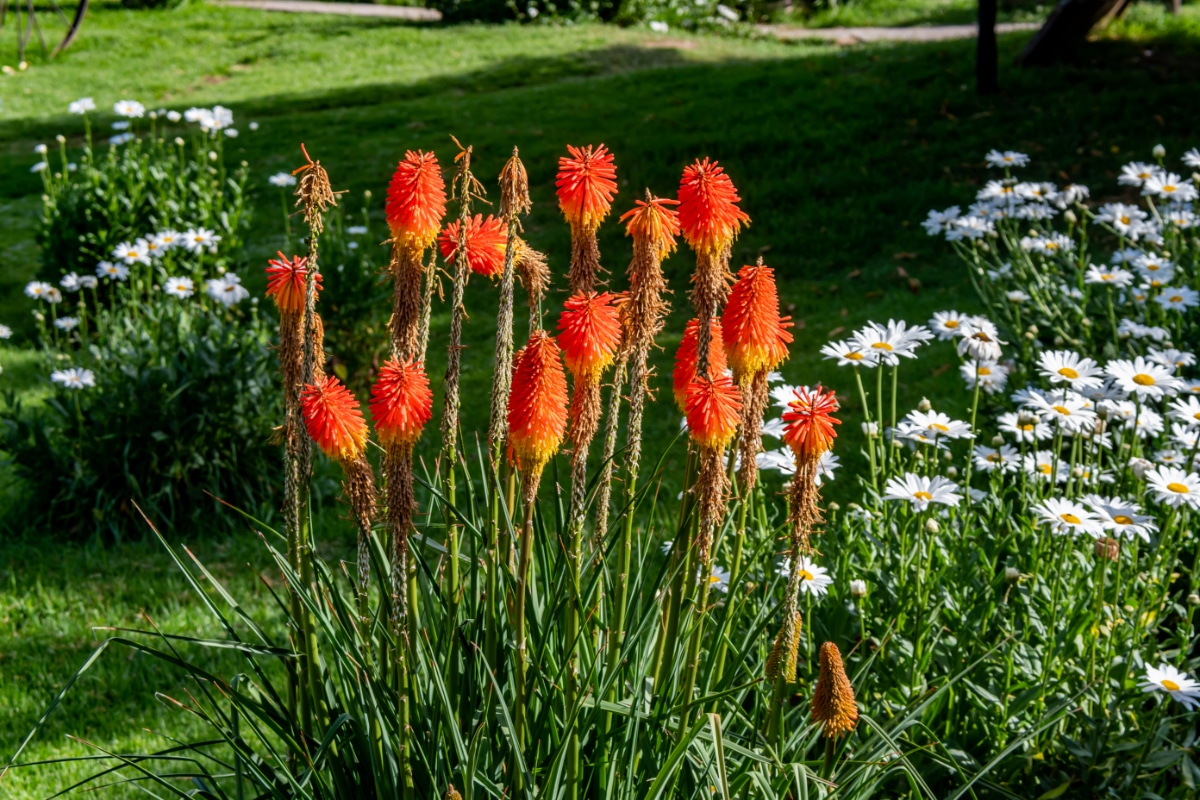
These incredible eye catching flowers are gaining popularity as more and more people drive past houses and see people growing them and find themselves slowing down. They are a show stopper!
Russian Sage
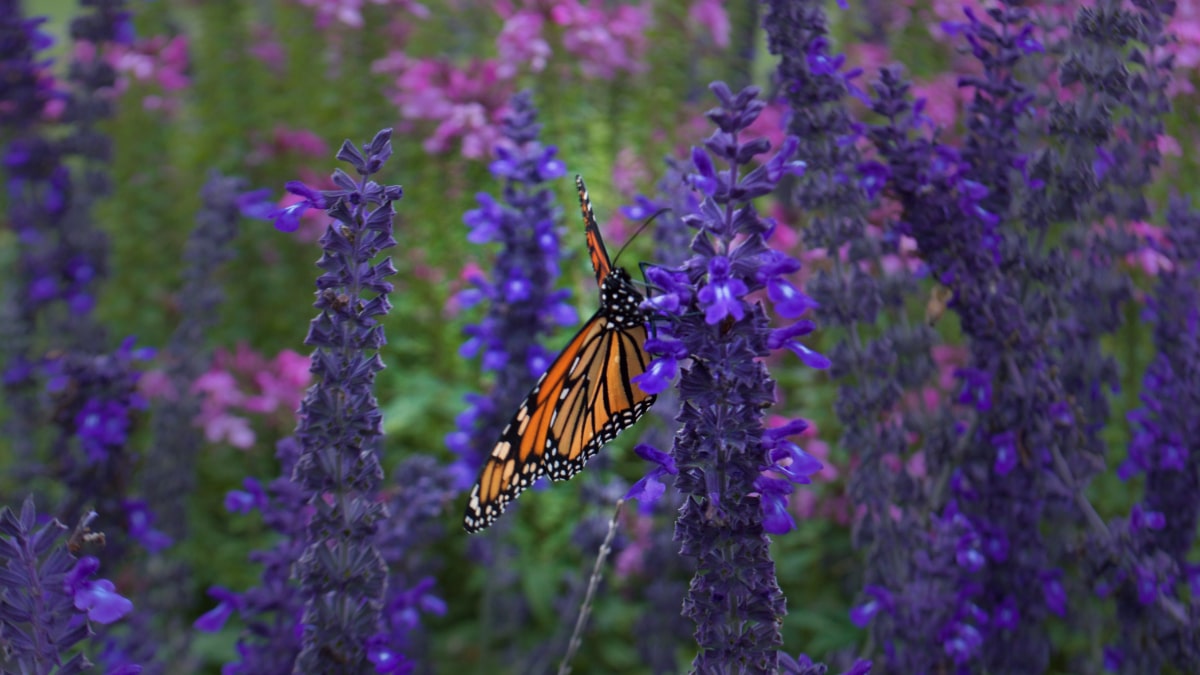
Russian Sage is a popular plant to use in Xeriscaping, landscaping that uses minimal water and is most common in desert climates. In truth, Russian Sage will grow anywhere, but it loves being dry.
Salvia
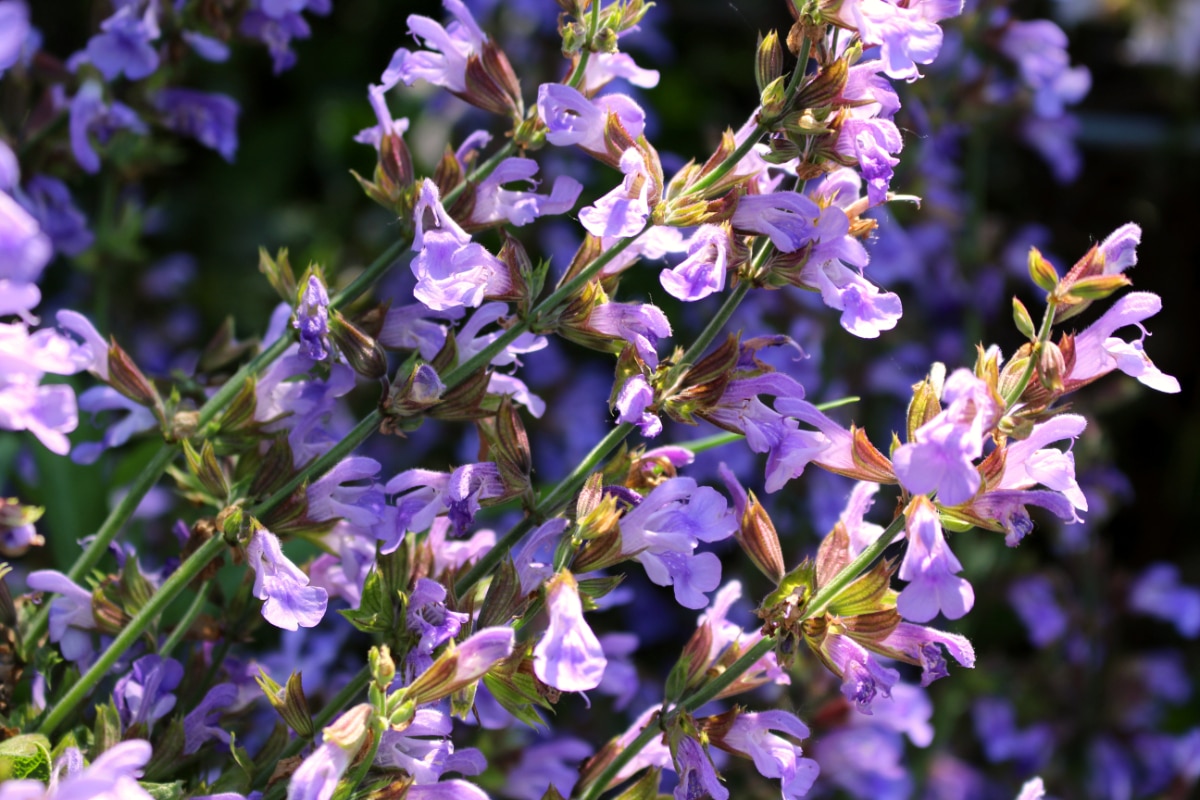
Care for Salvia varies quite a bit depending on which type you decide to buy, so be sure to check the packaging for one that fits your lifestyle and needs.
Sedum Voodoo
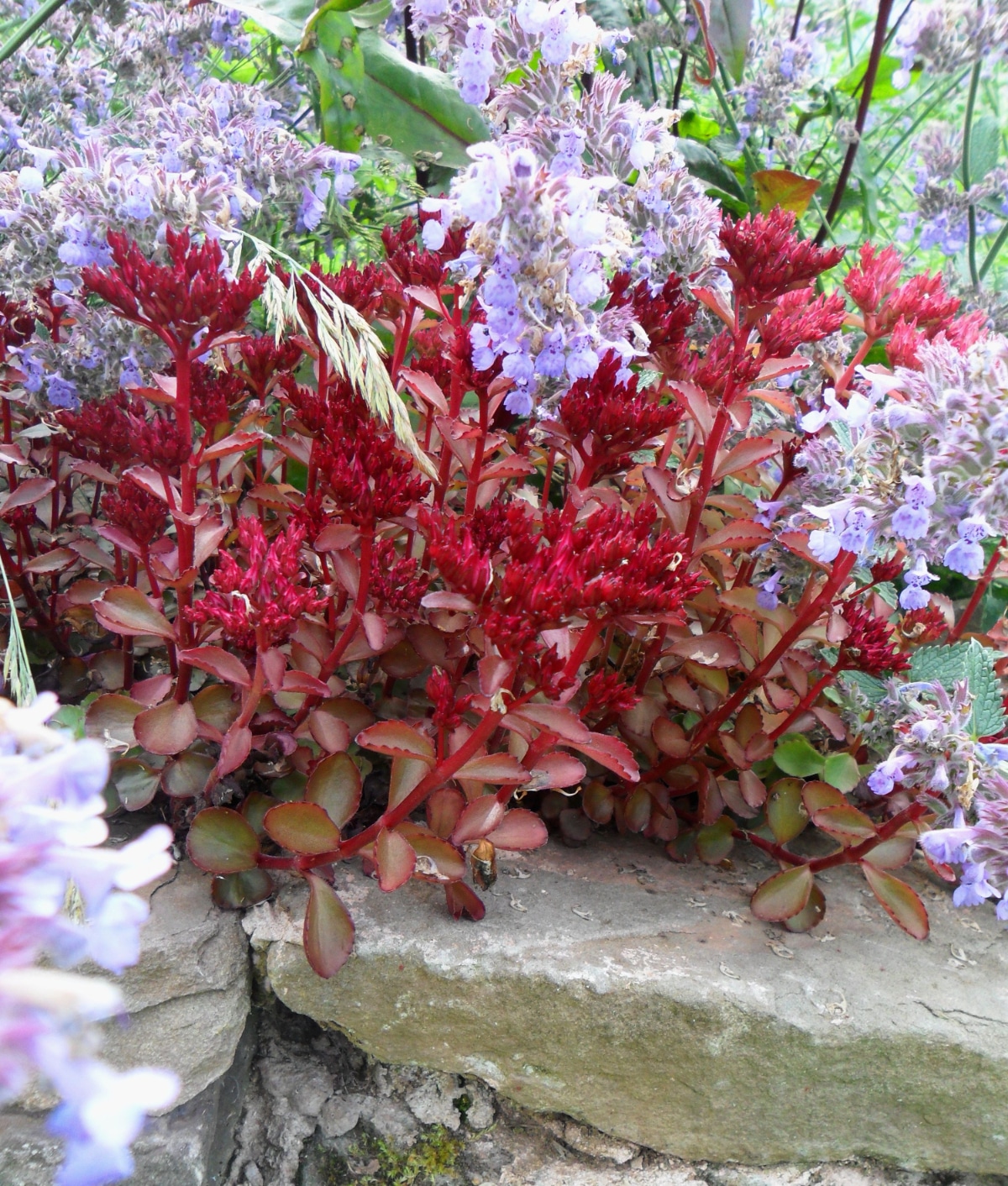
Sedum Voodoo is actually classified as a cactus/succulent and it grows well in zones 3 to 9 in the outdoors. This tough little plant loves to spread out far and wide if you let it.
Shasta Daisy

The Shasta Daisy, so named because it reminded its creator of the snow that sits atop Mount Shasta in Northern California, has been a classic in gardens for nearly a hundred years now and that doesn’t look like it will end anytime soon thanks to its classic daisy petals.
Siberian Iris
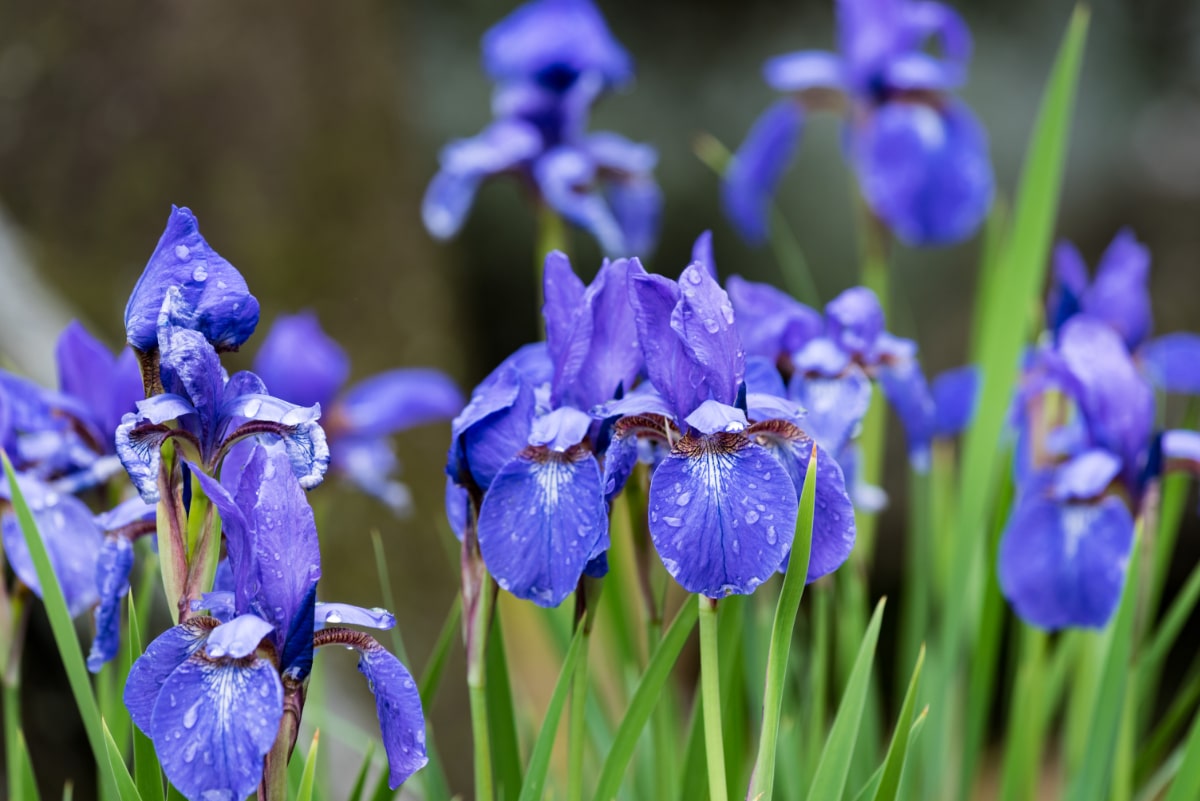
Don’t think that you need to live in the frigid north just to grow Siberian Irises. They will grow all the way down into zone 9, though at that point you might want to keep them in at least partial shade.
Speedwell
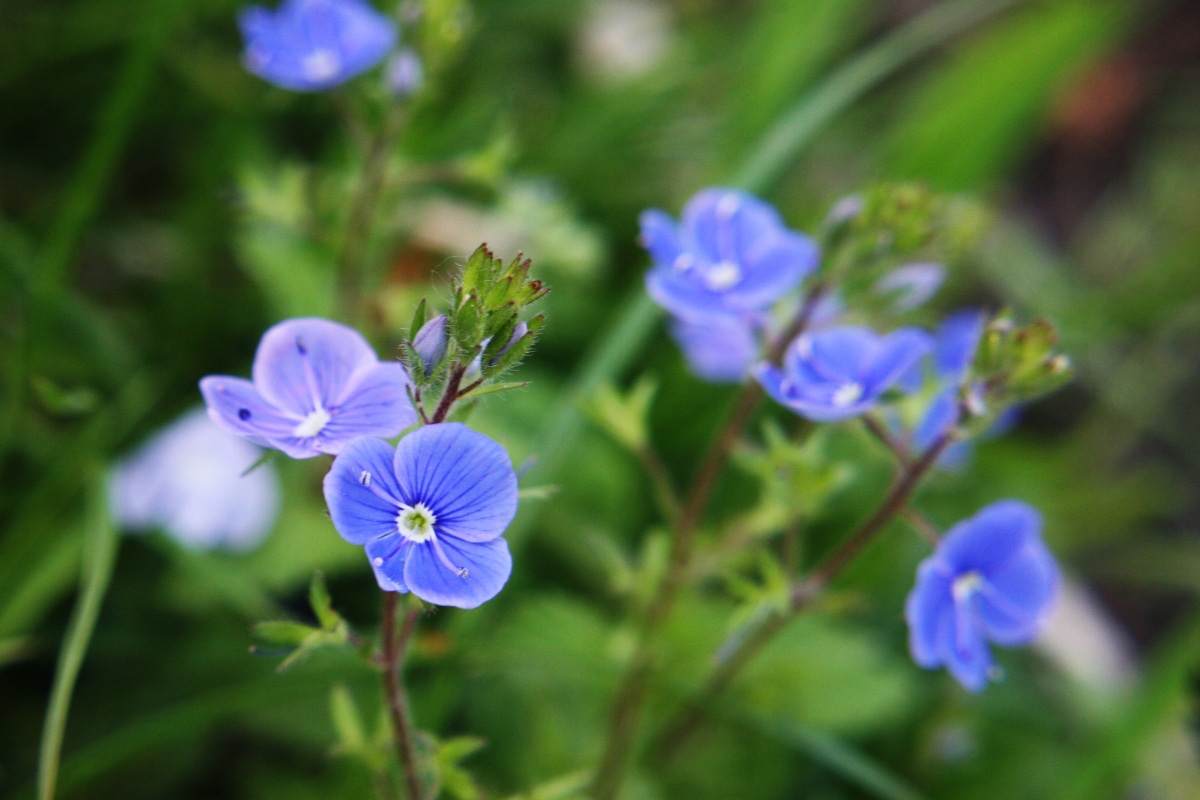
Speedwell is also known as Veronica and it’s a great plant to have in your garden, not just for the flowers, though they are lovely, but also for the fact that it is edible (tastes like watercress) and it is good for helping with asthma and allergy symptoms.
Tickseed

Don’t let Tickseed’s name put you off planting these gorgeous bright flowers! They look amazing in your yard or in a vase if you want cut flowers to enjoy inside.
Whirling Butterflies
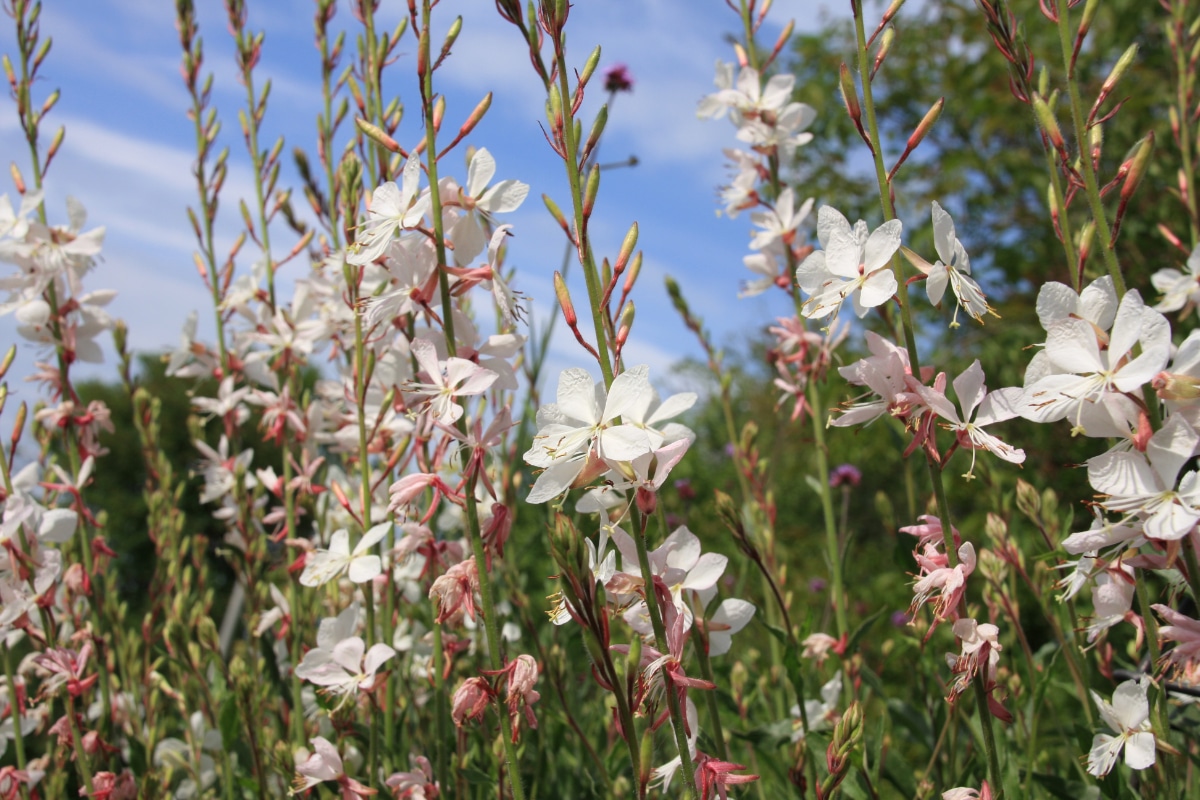
Whirling Butterflies really live up to the name, looking like little white butterflies fluttering through the air as they swish in the wind.
White Trillium
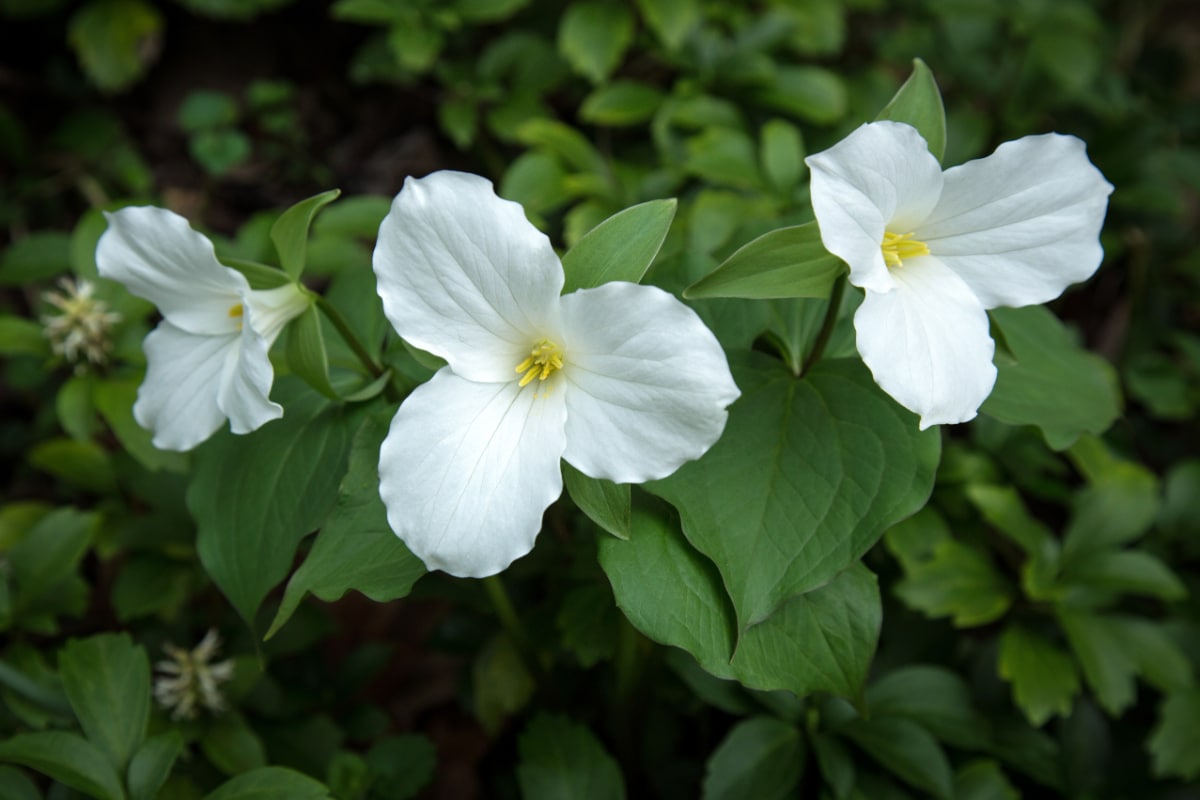
White Trillium is a native to our shores, it grows wild from Quebec in the north all the way to the top of Georgia through the Appalachian Mountains. Their white flowers make a bold statement against their dark green foliage.
Yarrow
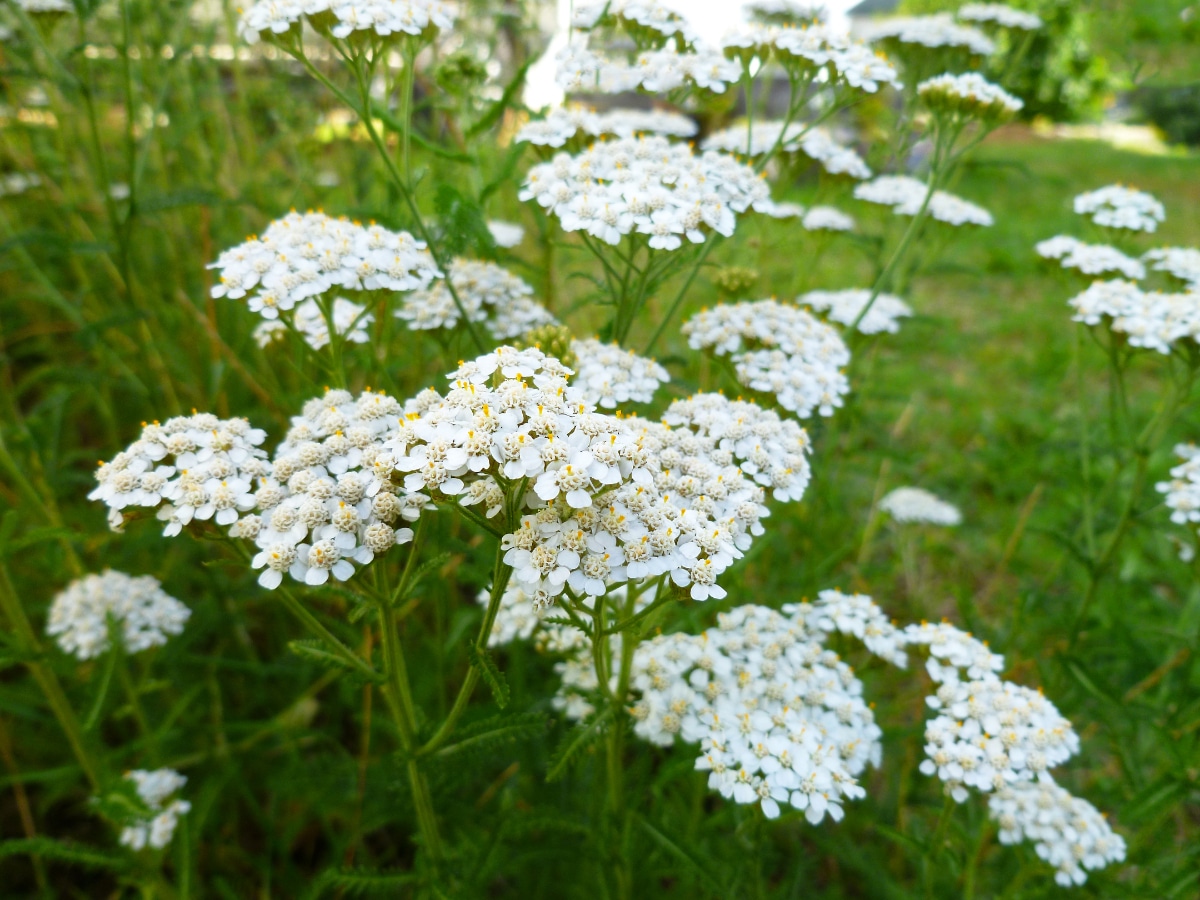
Yarrow has an incredibly sweet scent similar to Chrysanthemums and is used as animal feed in some parts of the world. Here though it’s just a pretty little plant with pretty little flowers.
Yellow Hollyhocks
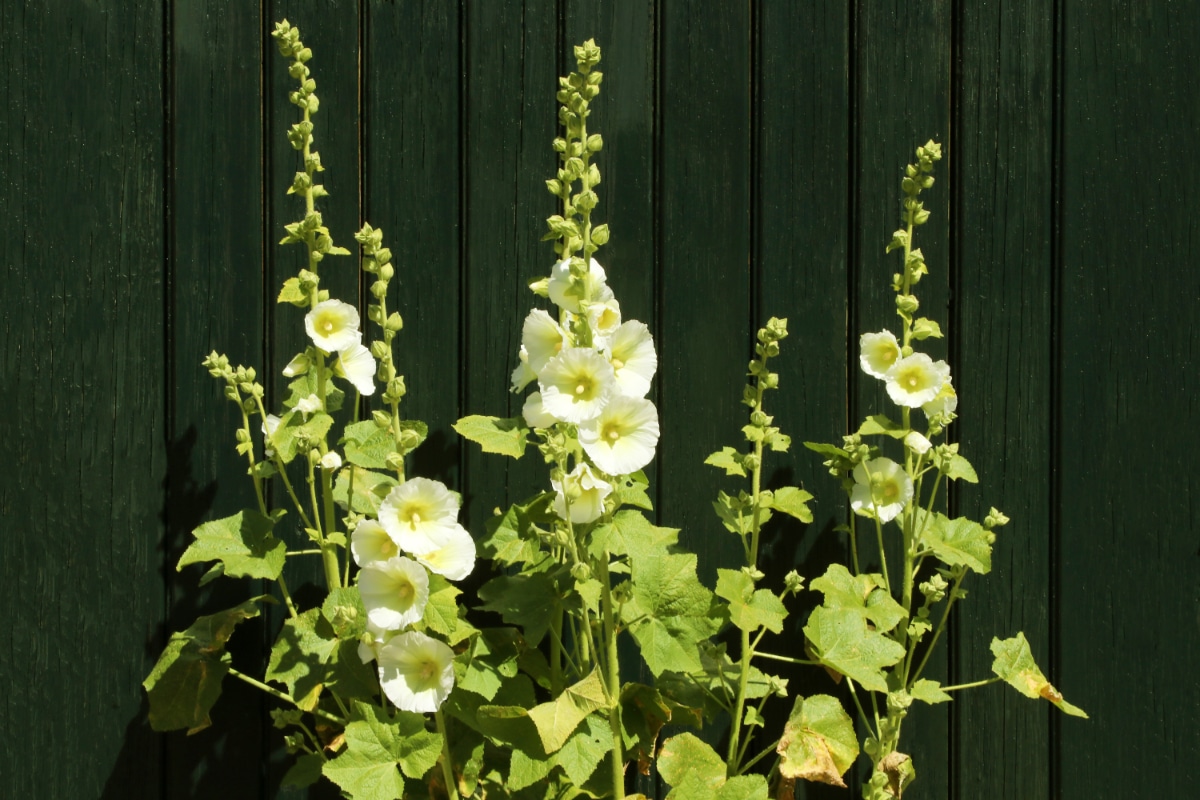
If you decide to grow Yellow Hollyhocks be sure that they have some sort of protection from the wind. They can grow quite tall and if they aren’t protected they will snap.
Yellow Loosestrife
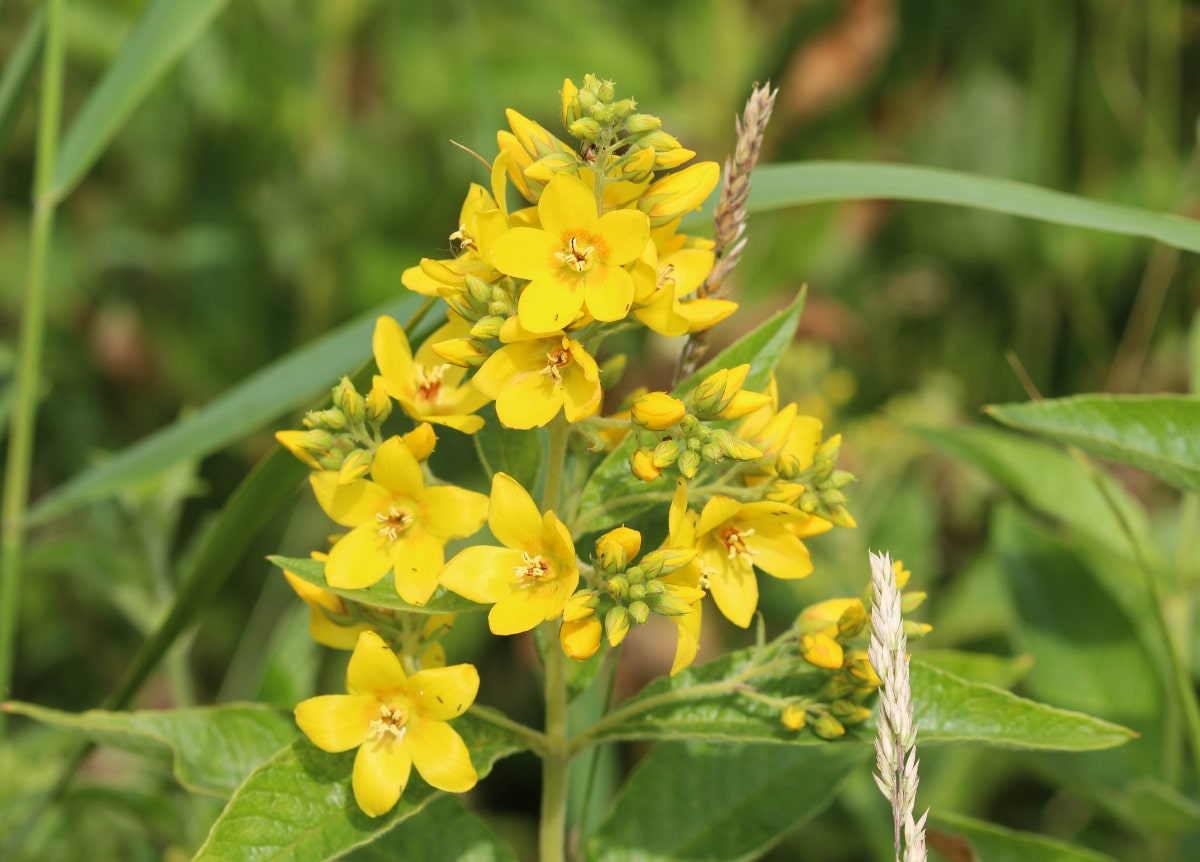
If you want a plant that offers a lot of color all summer then you want Yellow Loosestrife. They bloom from June to August and are sure to be eyecatching no matter where you plant them.
How to Extend the Bloom Time of Perennials
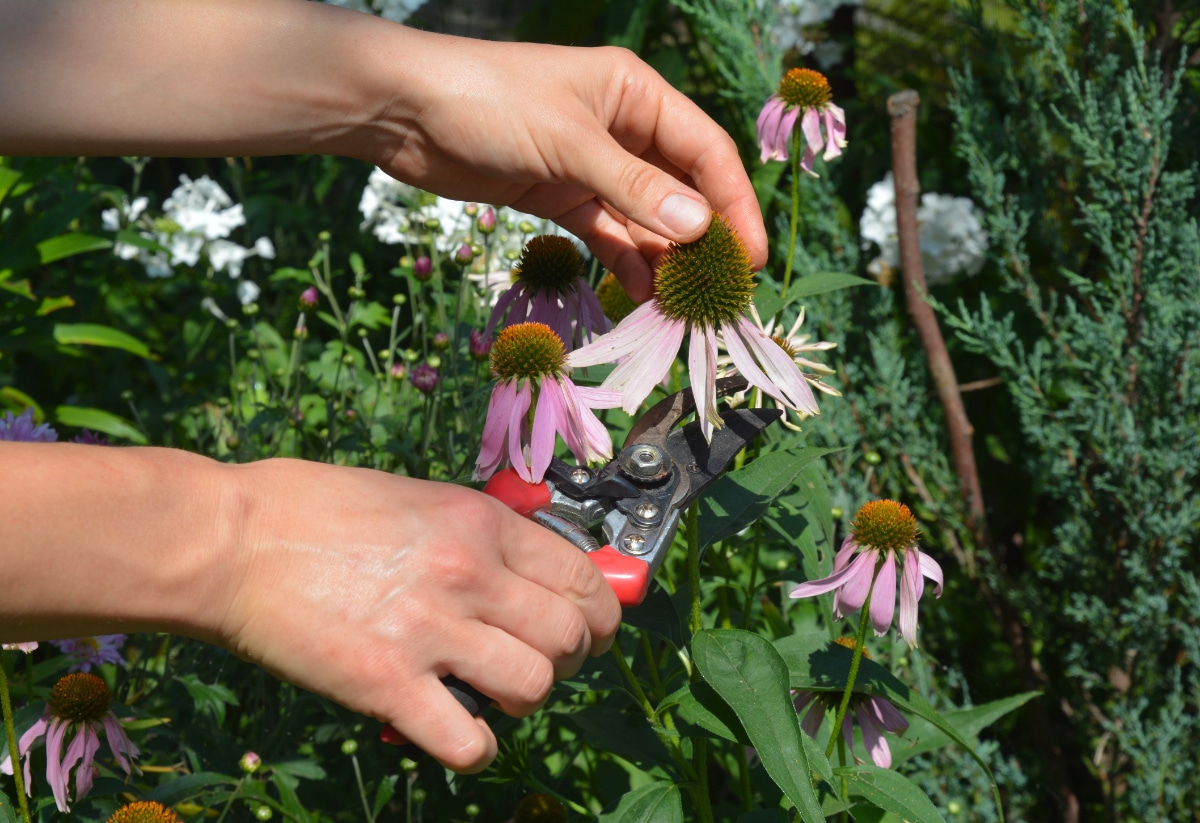
It is possible to extend the amount of time there are blooms on a plant, but at first, it might seem counterintuitive, it’s a process called deadheading, which I mentioned earlier in the article. Deadheading is quite simple, though it feels a bit wrong. All you have to do is cut off the flowers as they reach the end of their lives. You’ll be able to tell they’re ready for deadheading when the flowers start turning brown and shriveling up.
How does cutting off flowers help the plant grow more? Well, I’m glad you asked! As a flower starts to die the plant will focus more energy on trying to keep it alive. In doing so it doesn’t have as much energy to dedicate to putting out new flowers. So, you end up with fewer flowers than if you had removed the dying. By removing them completely, yes, the plant will need to spend a small amount of energy to heal the wound, but in the long run, it’s a lot better for the plant not to have to struggle with the dying flower.
Go forth with this new knowledge and create a beautiful perennial garden you will love all summer long.

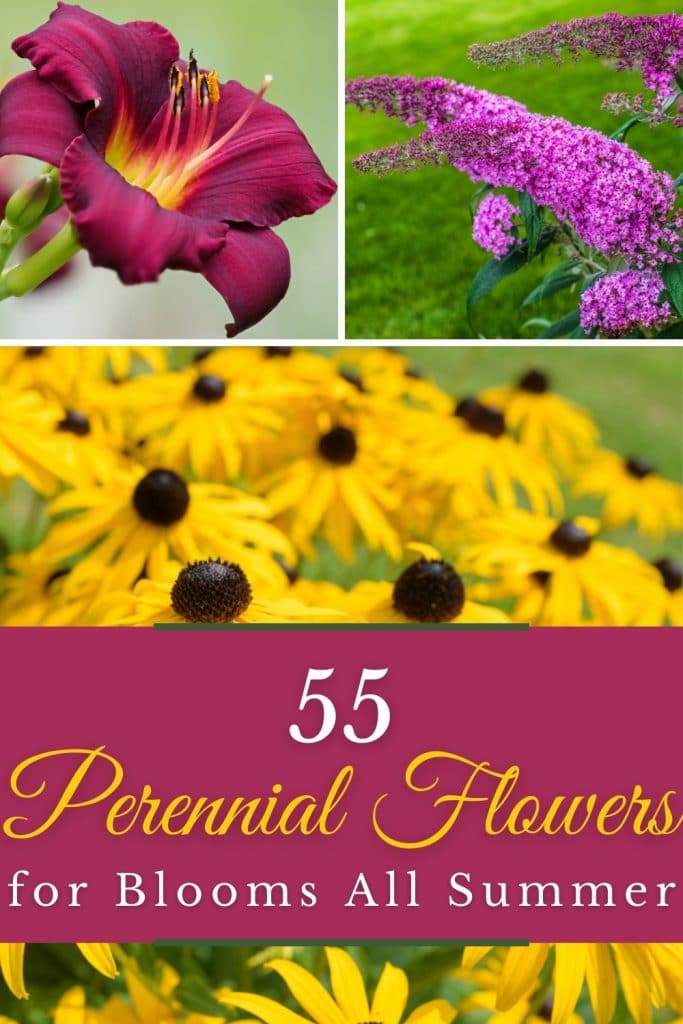
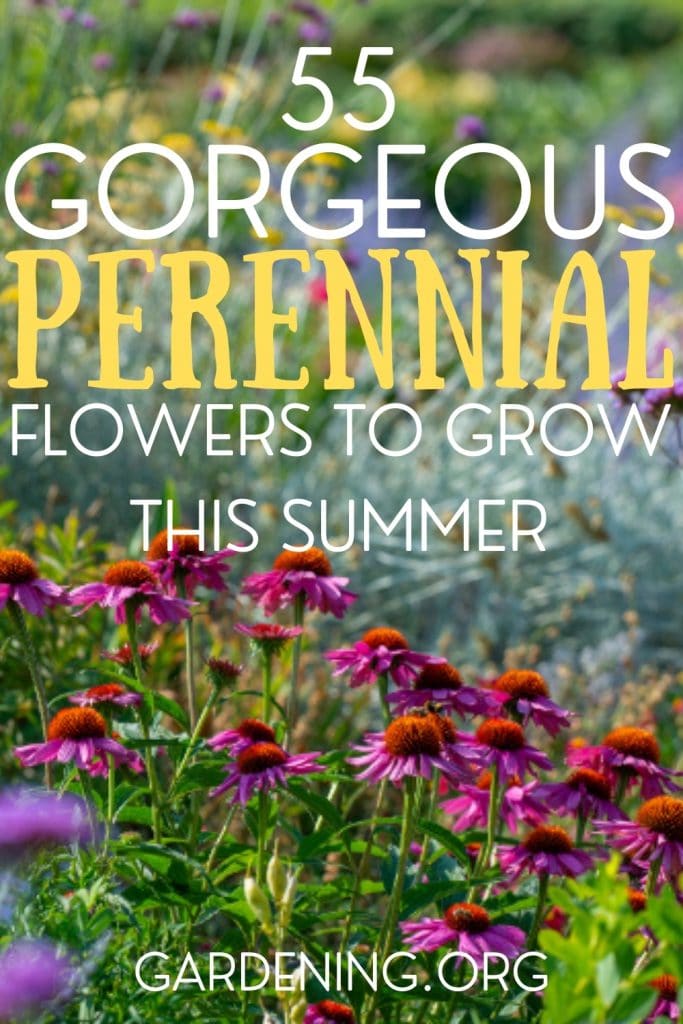
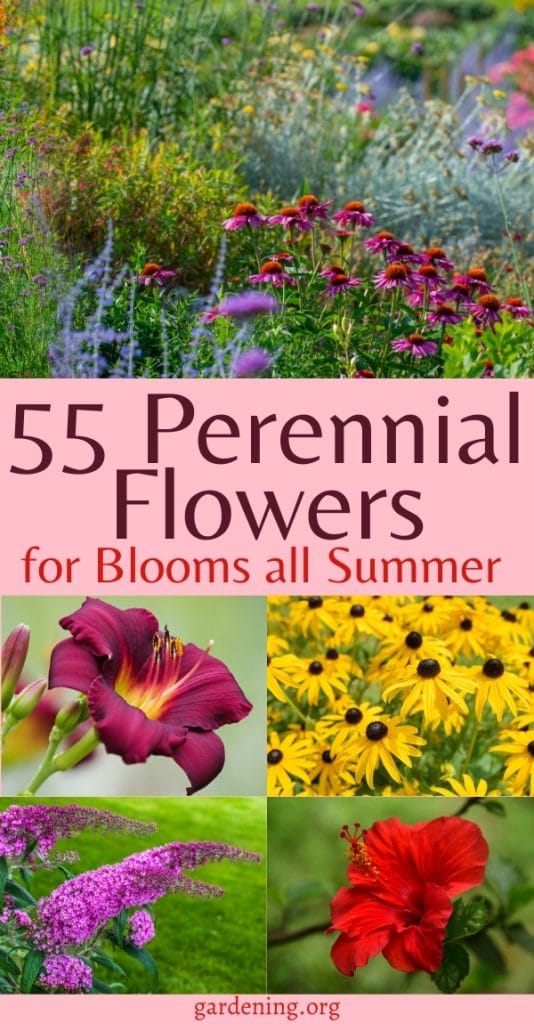

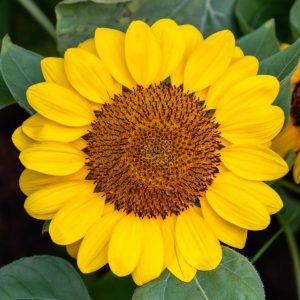
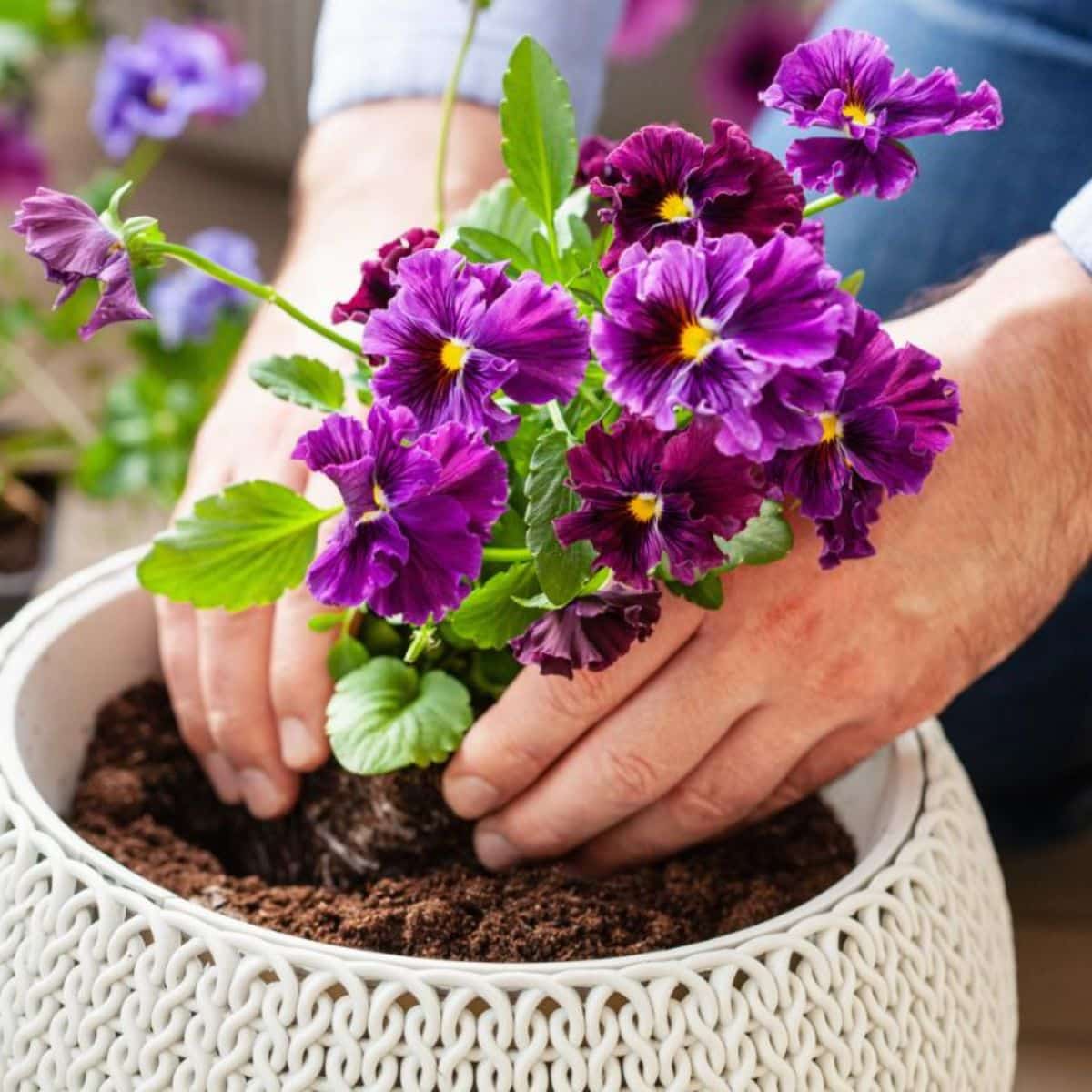
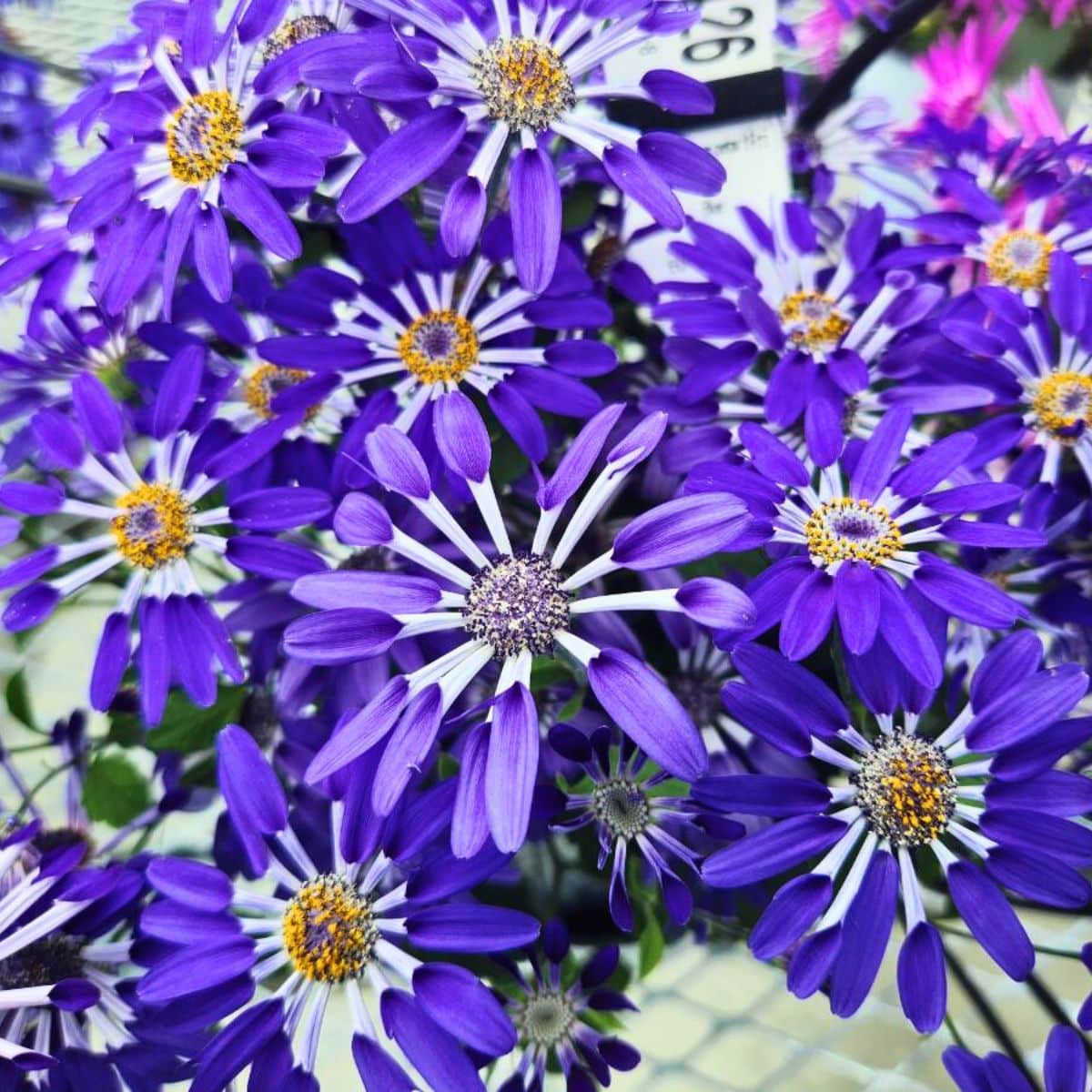
Marlina Sherbet
Love it!